Text
Breast Cancer Awareness: Don't Ignore the Signs

Get the Facts on Breast Cancer Today! Why Early Detection is Key to Survival
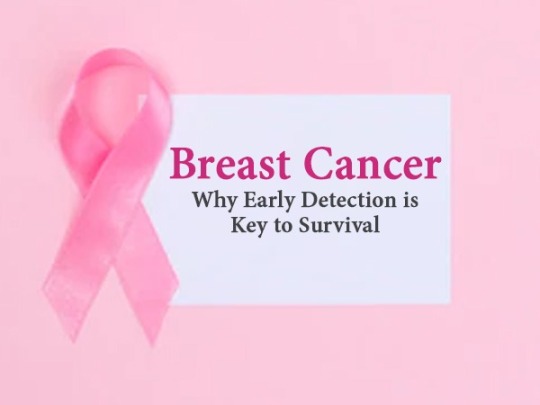
Breast cancer Awareness is important as it is the second leading cause of death among women worldwide. In 2017 alone, 1.67 million people were diagnosed with breast cancer, making it the most commonly diagnosed type of cancer in women. Breast cancer is also the most common cancer in women under 50 years old.
What all you will get in this article:
- Reasons for Breast Cancer
- How common is breast cancer among women?
- Early detection
- The treatment options
In the United States alone, about 40,000 people die each year due to breast cancer. Early diagnosis and treatment reduce mortality rates significantly. As a woman ages, her chances of developing breast cancer increase. The risk increases steadily throughout adulthood until menopause.
There are two types of breast cancers: invasive and noninvasive.
- Invasive breast cancer cells have spread beyond their original location.
- Noninvasive breast cancer does not invade surrounding tissue.
The best way to treat breast cancer is to detect it early. If detected early enough, treatment options are much greater than if left untreated. Unfortunately, many women do not seek medical attention until they have already developed symptoms. By then, it may be too late to successfully treat the disease.
Breast Cancer Awareness Month is celebrated in October to raise public awareness about breast cancer and its prevention. Breast cancer awareness month was established in 1982 by the National Breast Cancer Coalition (NBCC) to increase public knowledge about breast cancer and its prevention. In addition to raising awareness, NBCC also works to provide education and screening services, promote research funding, and advocate for improved access to treatment and care.
Breast Cancer Awareness: Reasons for Breast Cancer

There are many reasons why breast cancer is so prevalent today. One of these reasons is the fact that we have not been eating enough fruits and vegetables. Fruits and vegetables provide us with antioxidants that help fight off free radicals. Free radicals are unstable molecules that are created naturally as a result of cellular respiration. These unstable molecules damage DNA and increase the risk of developing cancer. Antioxidants neutralize free radicals and prevent them from damaging our cells. Eating foods high in antioxidants helps reduce the risk of getting cancer.
Another reason why breast cancer is so rampant today is because of the chemicals that are being put into our environment. Chemicals like pesticides, herbicides, and fungicides are known carcinogens (cancer-causing agents). Pesticides are especially harmful since they enter the body through the skin and food chain. When we ingest them, they get stored inside our fat cells and then released into the bloodstream. Once they reach the liver, you can easily get them out of the body. However, if they accumulate over time, they may lead to cancer. Herbs and spices can also contribute to the development of cancer.
Studies show that certain herbs like garlic, onions, and ginger can stimulate cancerous tumors. Other herbs like turmeric and black pepper may inhibit tumor growth. Research suggests that consuming these types of herbs regularly could lower the risk of developing cancer later in life. Lastly, lifestyle choices play a role in whether or not someone develops breast cancer. Being overweight increases the risk of developing breast cancer. Obesity causes estrogen levels to spike, which can lead to abnormal cell division.
Excessive alcohol consumption may also lead to breast cancer. Alcohol lowers the number of sex hormones present in the body, which may affect the way the cells divide. Smoking cigarettes also increases the risk of developing cancer, mainly because cigarette smoke contains thousands of different toxins that can harm the lungs and respiratory system. Tobacco smoke damages DNA and increases the risk of cancer.
Breast Cancer Awareness: How common is breast cancer among women?

According to the American Cancer Society (ACS), approximately 252,710 women were diagnosed with breast cancer in 2016. About 40,610 deaths occurred due to breast cancer in the same year. While these numbers seem frightening, it should be noted that only about 10% of those affected died from their condition.
When it comes to early detection, how can I ensure it?
Early detection means catching breast cancer before it spreads. If detected early enough, breast cancer may not spread beyond the breast. There are several ways to detect breast cancer before any symptoms appear. These include self-exams, mammograms, clinical exams, blood tests, and genetic testing. Self-examination is the simplest method to use. Women should perform monthly breast examinations starting at age 20. One should go for a yearly examination once they are 30. Mammography is the standard screening test for detecting breast cancer. However, mammograms alone cannot always determine whether a lump is benign or malignant. Therefore, you should go for additional imaging studies (such as ultrasound) to confirm the diagnosis.
Clinical exams involve examining breasts directly. Blood tests measure levels of certain biomarkers in the body. Genetic testing involves analyzing DNA samples to identify mutations associated with an increased risk of developing breast cancer. Breast self-exams are an effective way to detect lumps and changes in breasts. Women should perform monthly breast self-exams and report any abnormalities immediately.
Breast Cancer Awareness: The treatment options
A mammogram is the best way to detect breast cancer at its earliest stage. Mammograms provide images of the breasts' ducts, glands, and lymph nodes. These images allow doctors to identify abnormalities before they become tumors. Women should get screened starting around the ages of 40-45 and continue getting checked annually. If there are any abnormal results, you should go for further tests immediately.
Treatment options depend on the size, stage, and grade of the tumor. Treatment options range from surgery, radiation therapy, chemotherapy, hormone therapy, targeted therapy, immunotherapy, biological therapy, and stem cell transplantation.
Early detection and treatment can reduce mortality rates significantly. Regular self-examinations, annual screenings, and regular checkups with your doctor can help keep you safe from breast cancer.
Many women who have breast cancer have gone on to live long and productive lives. Despite the seriousness of the disease, there are treatments available that allow patients to survive and thrive.
Final Takeaway,
Breast cancer symptoms: A lump in the breast area is one of the first signs of breast cancer. A lump may feel hard, tender, swollen, or change shape. Other breast cancer symptoms include discharge from the nipple (breast milk), pain, redness, dimpling, skin changes around the nipple, or thickening of the breast skin.
Breast self-exams: Women who have had children should begin breast self-examination at age 35. Women who haven’t given birth should start at age 40. Self-examine monthly starting then until menopause. Look for lumps and any other abnormalities. You might find them before they become noticeable to others.
Mammograms: Mammography uses x-rays to detect early-stage breast cancer. Your doctor may recommend a mammogram if you have dense breasts, a family history of breast cancer, previous radiation treatments to the chest, or a personal history of breast cancer. Regular mammograms can help reduce the risk of dying from breast cancer by detecting tumors while they're still small and treatable.
Clinical trials: Clinical trials test new ways to prevent, diagnose, and treat breast cancer. Supportive care studies focus on treating side effects of breast cancer treatment, such as lymphedema. Participating in a clinical trial could benefit you directly by providing access to cutting-edge therapies and improving outcomes for future patients. Learn more at www.cancer.gov/clinicaltrials.
Diet and nutrition: Eat a variety of foods, including plenty of fruits and vegetables. Foods high in fiber can help remove toxins from the body and keep estrogen levels low. Eat less fat and cholesterol, especially saturated fats. Limit alcohol consumption. Avoid processed meats, fried food, and sugar-sweetened beverages.
Read the full article
0 notes
Text
Erectile Dysfunction: Causes, Symptoms Treatment

Discover The Truth About Erectile Dysfunction And Finally Put An End To The Frustration
Erectile dysfunction (ED) is defined as the inability to achieve or maintain an erection sufficient for sexual activity. ED affects both men and women, although it may be more common among older men. There are many causes of ED, including physical problems, psychological issues, medications, and even medical conditions.
It is the inability to maintain an erection firm enough to satisfy sexual desires that cause ED. The difficulty maintaining an erection is normal at times, but if it occurs frequently and disrupts your sexual life consistently, your doctor might diagnose you with ED.
There is wide agreement among experts that ED is common and that the risk of developing it increases as one age. Men who suffer from ED are most likely to suffer from other forms of sexual dysfunction. ED's prevalence is, however, widely estimated. Based on a study published in 2018 says that approximately one-third of men are affected by ED.
Read | Premature Ejaculation: End Your Suffering Today!
The diagnosis
The first step in diagnosing ED is to determine whether the problem is temporary or permanent. If the problem is temporary, then the cause is likely something that can be treated easily. However, if the problem persists over time, then it's possible that the underlying cause is more serious. A doctor will perform a physical exam to check for any abnormalities. He/she will also ask questions about your medical history, lifestyle habits, and current symptoms. Your doctor may order blood tests to rule out certain conditions, such as diabetes or heart disease.
Causes of Erectile Dysfunction
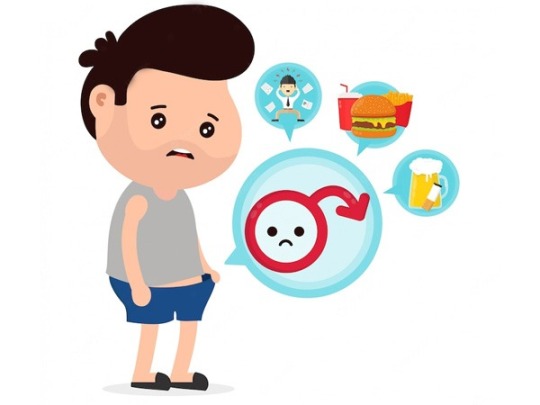
Causes of Erectile Dysfunction
There are several different types of ED. Most commonly, ED occurs due to physical issues. Physical causes include cardiovascular disease, diabetes, neurological disorders, and prostate cancer. Psychological causes include depression, anxiety, and relationship problems. Hormonal causes include low levels of testosterone and high levels of prolactin. The most common cause of ED is age; however, some people experience ED at any time in their lives. Other factors that contribute to the development of ED include:
- Physical problems - These include diabetes, high blood pressure, heart disease, prostate enlargement, and neurological disorders. Other physical causes of ED include injuries to the penis and damage to nerves.
- Psychological Issues - Depression, anxiety, stress, and relationship problems can lead to ED.
- Medications - Certain prescription drugs, recreational drugs, and illegal substances can cause ED.
- Medical Conditions - Diseases such as diabetes, cardiovascular disease, and certain cancers can affect blood flow to the penis.
Symptoms of Erectile Dysfunctions

Symptoms of Erectile Dysfunctions
Symptoms of ED vary depending on the underlying cause. Common symptoms include:
- Difficulty having an erection
- Painful intercourse
- Premature ejaculation
- Weakness or hardness of the penis
- Frequent urination
- Loss of sexual desire
- Feeling tired or fatigued
What medications could cause erectile dysfunction (ED)?
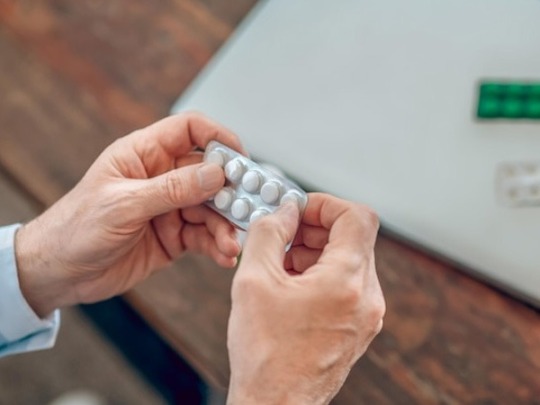
What medications could cause erectile dysfunction (ED)?
- Propranolol: Propranolol is a beta-blocker medication that is often prescribed to treat high blood pressure, anxiety, panic attacks, migraine headaches, and heart conditions. It works by blocking the effects of adrenaline, which causes increased heart rate and blood flow. In men, propranolol may cause ED due to its effect on the nerves that control erection.
- Clonidine: Clonidine is a prescription drug that is commonly used to treat hypertension and attention deficit hyperactivity disorder (ADHD). It works by inhibiting the release of norepinephrine, which is responsible for increasing blood pressure. When taken at low doses, clonidine does not affect sexual function. However, higher doses can cause impotence.
- Alprazolam: Alprazolam is a benzodiazepine anti-anxiety medication that is frequently prescribed to treat anxiety disorders, insomnia, and panic attacks. It works by binding to receptors in the brain that regulate mood and behavior. At therapeutic doses, alprazolam does not affect sexual function; however, at high doses, it can cause ED.
- Cimetidine: Cimetidine is a histamine H2 receptor antagonist that is used to treat ulcers and stomach acid reflux. It works by preventing the action of histamine, which increases gastric secretions and stimulates the production of hydrochloric acid. High doses of cimetidine can lead to ED.
- Risperidone: Risperidone is an antipsychotic medication that is used to treat schizophrenia, bipolar disorder, and irritability associated with autism. It works by blocking dopamine D2 receptors in the brain, which decreases the activity of neurons that send messages between different parts of the brain. As a result, risperidone affects the neurotransmitters that control sexual arousal and orgasm.
- Sildenafil: Sildenafil citrate is a phosphodiesterase type 5 inhibitor that is used to treat erectile dysfunction. It works by relaxing smooth muscle cells in the penis, which helps increase blood flow and results in an erection.
- Tadalafil: Tadalafil is a PDE5 inhibitor that is used to improve erectile dysfunction. It is similar to sildenafil, except that tadalafil is longer lasting.
Relationship between erectile dysfunction and depression

Relationship between erectile dysfunction and depression
A man suffering from erectile dysfunction (ED) may feel angry, frustrated, sad, or even unsure of himself. The number of medical causes of ED varies, but studies have found that men with ED are twice as likely to develop clinical depression as those without ED. A depressive illness involves persistent sadness, feelings of hopelessness, and a pessimistic outlook. A common symptom of depression are:
- The feeling of low self-esteem
- Activities that were once pleasurable have lost their appeal
- The fatigue
- An increase or decrease in appetite
- Disruptions to sleep
- Ignorance
Treatments

Treatments
Treatments for ED depend on the cause. Common treatments include counseling, medication, and surgery. Medications can mostly treat the underlying cause of ED. These include antidepressants, anti-anxiety drugs, and testosterone replacement therapy. You can go for surgery if your ED is a severe case.
- Viagra: Viagra is one of the most popular drugs for treating ED. It works by increasing blood flow to the penis. It does not work if the problem is psychological. If you have ED, talk to your doctor about taking Viagra.
- Cialis: Cialis is a drug that helps men get and keep an erection. It may take longer than Viagra to start working. You should only use Cialis once a day. Take Cialis at least 30 minutes before sexual activity. Do not take Cialis if you have recently eaten grapefruit juice.
- Levitra: Levitra is a prescription medicine that treats ED caused by problems with nitric oxide (NO) in the body. NO is a chemical messenger that relaxes muscles in the penis and increases blood flow to the penis during sex. Levitra works by blocking an enzyme called PDE-5 that breaks down NO.
- Tadalafil: Tadalafil is a prescription medicine that works by relaxing muscles in the penis and increasing blood flow to the area. It takes effect within 15 to 20 minutes. You can take Tadalafil sometimes along with sildenafil (Viagra).
- Sildenafil: Sildenafil is a prescription medication that works by helping the smooth muscle in the penis relax. It can help treat ED caused by problems with blood vessels, nerves, or hormones. Sildenafil works by blocking an enzyme that breaks down a substance called cGMP.
- Avanafil: Avanafil is a prescription drug that works by relaxing muscles and increasing blood flow to certain parts of the body. Avanafil works by blocking an enzyme known as CYP-450.
- Vardenafil: Vardenafil is a prescription pill that works by relaxing muscles, increasing blood flow to the genitals, and making the smooth muscle in the arteries around the penis contract. It can help treat impotence, low libido, premature ejaculation, and other conditions. Vardenafil works by blocking enzymes that break down a chemical called cGMP. cGMP stands for cyclic guanosine monophosphate.
The bottom line,
Prevention is always better than treatment. To prevent ED, try to avoid smoking cigarettes, drinking alcohol excessively, and taking recreational drugs. Also, make sure to get plenty of sleep each night. Try to exercise regularly and eat a balanced diet. Avoid stressful situations and stay away from people who might trigger negative emotions.
Read the full article
0 notes
Text
Pregnancy ke lakshan - प्रेगनेंसी होने पर नजर आते हैं कुछ इस प्रकार के शुरुआती लक्षण?

प्रेगनेंसी के शुरूआती लक्षण – Early pregnancy symptoms in Hindi

Pregnancy ke lakshan - आज के समय में तनाव, जॉब का प्रेशर और लॉकडाउन की वजह से बिगड़ी लाइफस्टाइल रिप्रोडक्शन सिस्टम पर गहरा असल डाल रहा है। जिसका नतीजा ये है कि महिलाओं को कंसीव करने में दिक्कत आ रही है, इसलिए डॉक्टर्स कह रहे हैं कि यदि कोई कपल कंसीव करता है तो उन्हें इसके साथ किसी भी तरह की छेड़छाड़ नहीं करनी चाहिए, जो लोग बेसब्री से पेरेट्स बनना चाहते हैं उनके लिए पीरियड्स मिस होने तक इंतजार करना बहुत मुश्किल भरा होता है। लेकिन आपको अपनी प्रेग्नेंसी पता करने के लिए रिलेशन बनाने के बाद 1 महीने तक इंतेजार करने की जरूरत नहीं होती है बल्कि आपको 3 से 4 दिनों में ही पता चल जाएगा कि आप प्रेगनेंट है या नहीं। तो चलिए आज हम प्रेग्नेंसी के कुछ ऐसे शुरूआती लक्षणों (Pregnancy ke lakshan) के बारे में।
प्रेगनेंसी के शुरुआती लक्षण की लिस्ट- List of early pregnancy ke lakshan
- पीरियड्स मिस होना: प्रेग्नेंट होने का सबसे शुरुआती लक्षण पीरियड्स का मिस होना माना जाता है। इसके बाद ही कोई महिला प्रेग्नेंट टेस्ट की तरफ रुक करती है, लेकिन गर्भवती होने के बाद भी कुछ महिलाओं में पहले पीरियड्स के दौरान हल्की ब्लीडिंग हो सकती है।
- जी मिचलाना और चक्कर आना: प्रेग्नेंसी की शुरूआती (Pregnancy ke lakshan) महीनों में चक्कर आना आम बात है। इनकी वजह से ब्लड शुगर का लेवल गिर जाता है और भूख में कमी आती है जिससे आपको चक्कर महसूस होने लगते हैं। साथ ही इस तिमाही में हार्मोनल और अन्य बदलाव बॉडी में रक्त वाहिकाओं की दीवारों को चौड़ा कर देते हैं।
- हल्का रक्तस्राव: प्रेग्रेंसी की शुरुआत में आपको हल्की ब्लीडिंग हो सकती है, लेकिन इससे कोई नुकसान नहीं है। इसे स्पॉटिंग कहते हैं। ये स्थिति तब होती है जब बढ़ता हुआ भ्रूण खुद को आपकी कोख की दीवारों में प्रत्यारोपित करता है। इस तरह की ब्लीडिंग अक्सर उस समय के आस-पास होती है, आपके पीरियड्स का समय होने वाला होता है।
- थकान महसूस होना: आमतौर पर ऐसा हार्मोन्स में होने वाले चेंजिस की वजह से होता है। प्रेग्नेंसी की दूसरी तिमाही में थकान कम रहती है, लेकिन प्रेगनेंसी की तीसरी तिमाही में थकान बहुत अधिक होने लगती है। साथ ही प्रेंग्नेंसी में अधिक थकान (Pregnancy ke lakshan) एक आम समस्या है, शारीरिक, मानसिक, हार्मोन में बदलाव और दैनिक दिनचर्या के प्रभाव की वजह से होती है।
- मॉर्निंग सिकनेस: मॉर्निंग सिकनेस गर्भावस्था का एक सामान्य लक्षण है और इसमें कभी-कभी जी मिचलना या उल्टी होना शामिल है। प्रेग्नेंसी के समय से समस्या दिन के किसी भी समय असुविधा पैदा कर सकता है। ये समस्या आमतौर पर गर्भावस��था के पहले चार महीनों के भीतर होती है और अक्सर ये पहला संकेत है कि आप गर्भवती है।
- ब्रैस्ट और निप्पल्स में दर्द होना और निप्पल्स का रंग परिवर्तन: ब्रैस्ट और निप्पल्स में दर्द होना और निप्पल्स का रंग परिवर्तन गर्भावस्था के शुरूआती दिनों में महसूस कर सकते हैं। तब कुछ महिलाओं में निप्पल्स में संवेदनशीलता के साथ-साथ ब्रेस्ट में दर्द भी अनुभव किया जा सकता है।
- मूड स्विंग होना: गर्भावस्था की शुरूआती लक्षणों (Pregnancy ke lakshan) में मूड में मूड में उतार चढ़ाव आना भी अहम् भूमिका निभाता है। ��्रेग्नेंसी के बाद एक महिला बिना कारण हंसना, रोना और असामान्य रूप में भावनात्मक व्यवहार का अनुभव करती है ऐसा उसके शरीर में हार्मोन की वजह से होता है। ये लक्षण अक्सर सभी महिलाओं में उनकी गर्भावस्था के समय काफी आम है।
- सिर दर्द और सिर भरी होना: गर्भावस्था की दूसरी और तीसरी तिमाही में सिर दर्द की वजह से स्ट्रेस हो सकती है। इसके अलावा अधिक वजन, हाई ब्लड प्रेशर, मांसपेशियों पर स्ट्रेस पड़ने, गलत पोस्चर और पोषक तत्वों की कमी की वजह से भी सिरदर्द की समस्या हो सकती है। साथ ही कैफीन के अधिक सेवन और आईसाइट कमजोर होने की वजह से भी ये समस्या हो सकती है।
- बार बार टायलेट जाना: गर्भावस्था के समय एचसीजी हार्मोन का लेवल बढ़ने की वजह से बार-बार यूरिन आने की इच्छा होती है। एचसीजी हार्मोन गर्भवती महिला की किडनी में रक्त के प्रवाह को बहुत अधिक बढ़ा देता है। जिसकी वजह से सामान्य दिनों की अपेक्षा अधिक पेशाब आता है, लेकिन नौस से सोलह हफ्तों के बार पेशाब (Pregnancy ke lakshan) की मात्रा सामान्य हो जाती है।

- खाने की इच्छा में बदलाव: गर्भधारण के बाद एक खास लक्षण होता है जो ज्यादातर सभी महिलाएं अनुभव अवश्य करती है। इसमें स्वाद में परिवर्तन, कभी किसी भोजन को खाने की बेहद इच्छा होना या मनपसंद भोजन से चिड़न होना। इसके अलावा एक नई गर्भवती महिलाओं में अक्सर आहार की गड़बड़ी विकसित होती है, प्रेग्नेंसी से पहले उनके पसंद किए जाने वाले व्यंजन इस समय पसंद नहीं आता है। वहीं आपको किसी खास भोजन को खाने का मन बार-बार हो सकता है, इसे प्रेग्नेंसी के आहार की क्रेविंग के रूप में जाना जाता है।
- पाचन सम्बन्धी समस्याएं जैसे कब्ज की शिकायत: गर्भावस्था के समय प्रोजेस्टेरोन हार्मोन बढ़ने की वजह से शरीर की मांसपेशिया रिलैक्स हो जाती है, जिसमें आंतें भी शामिल है। आंतों के धीमा पड़ जाने पर पाचन भी धीरे काम करने लगना है जिससे कब्ज की समस्या (Pregnancy ke lakshan) पैदा होती है। प्रेग्नेंसी में कब्ज की समस्या पैदा होती है। प्रेग्नेंसी में कब्ज होना आम बात है।
FAQs (प्रेगनेंसी के बारे पूछे जाने वाले प्रश्न) Question Pregnancy ke lakshan
Q1. प्रेग्नेंसी के लक्षण कितने दिन में दीखते है?
उ. आमतौर में प्रग्नेंसी क शुरूआती लक्षण 6 से 14 दिनों में दिखते हैं। इन लक्षणों में शामिल है शरीर का तापमान बढ़ना, ब्रेस्ट में सूजन, अधिक थकावट महसूस होना, अधिक नींद आना, ऐंठन और पेट सबंधी दिक्कते।
Q2. प्रेग्नेंट है या नहीं कैसे पता चलता है?
आप पीरियड का मिस होना, बार-बार टॉइलट जाना,ब्रेस्ट में हल्का दर्द या भारीपन,उल्टी आना या जी मिचलाना, हल्का बुखार होना, पेट में दर्द, टेस्ट और स्मेल में बदलाव जैसे लक्षणों के द्वारा प्रेग्नेंसी का पता लगा सकते हैं।
Q3. प्रेगनेंसी के पहले हफ्ते में क्या लक्षण दिखाई देते हैं?
गर्भावस्था के शुरूआती लक्षणों में जी मिचलाना और उल्टी होना, कई बार यूरिन जाना आदि शामिल है। इसके इतर गर्भधारण करने पर महिला को थकान की शिकायत होती है। इसके साथ ही कुछ महिलाओं में सिर दर्द के साथ ही शुरूआत में पैरों में सूजन भी नजर आती है। साथ ही ये इंप्लांटेशन ब्लीडिंग प्रेग्नेंसी के शुरूआती संकेत में से एक हैं।
Q4. माहवारी के कितने दिन बाद गर्भ ठहरता है?
आपके पीरियड्स की अवधि सामाप्त होने के बाद आप गर्भवती हो सकती है। प्रेग्नेंट होने के लिए पीरियड्स के बाद 5 दिन और ओव्यूलेशन वाला दिन भी शामिल है। अगर आप गर्भधारण करने की योजना बना रहे हैं तो आपको हफ्ते में दो या तीन बार सेक्स बार करने की सलाह देते हैं।
निष्कर्ष (Conclusion)
हमारे लेख में बताए गए प्रेगनेंसी के शुरूआती लक्षण के जानने के बाद तुरंत अपनी जांच करवाएं और डॉक्टर से सलाह लें। इसे आगे जारी रखने के लिए इस TV Health पर क्लिक करें।
Read the full article
0 notes
Text
Tummy Tuck Surgery: Do's & Don'ts of Abdominoplasty

An Introduction to the Tummy Tuck Surgery

Abdominoplasty (Tummy Tuck) is a surgical procedure performed to remove excess skin and fat from the abdomen area. It is commonly performed to create a smaller waistline and reduce the appearance of the abdomen bulging over the clothing. An abdominoplasty may be done alone, or along with other procedures, depending on the amount of fat removal desired. Abdominoplasty is often combined with breast reduction surgery, liposuction, and thigh lift.
The surgery involves making incisions around the belly button and removing excess skin and fat from below the navel. The surgeon may use a combination of techniques including liposuction, laser resurfacing, and chemical peels to achieve the desired results.
In general, abdominoplasty is performed under general anesthesia and requires about six hours of recovery time. In some cases, the patient may experience mild discomfort following the procedure. However, many patients report feeling much improved after their tummy tuck.
One of the most common reasons people choose to have abdominoplasty is to decrease their weight. Many women who have had children find themselves struggling with postpartum weight gain and may choose to undergo tummy tuck surgery which reduces their waist size. Other reasons include appearance enhancement after pregnancy, removal of stretch marks, and treatment of hernias.
However, not everyone who wants a tummy tuck has been pregnant or lost significant amounts of weight. Other reasons a person may seek out a tummy tuck include having stretch marks, bulges, or rippling following childbirth. People with these conditions often find surgery to be worthwhile in the long run.
Types of abdominoplasty surgery:
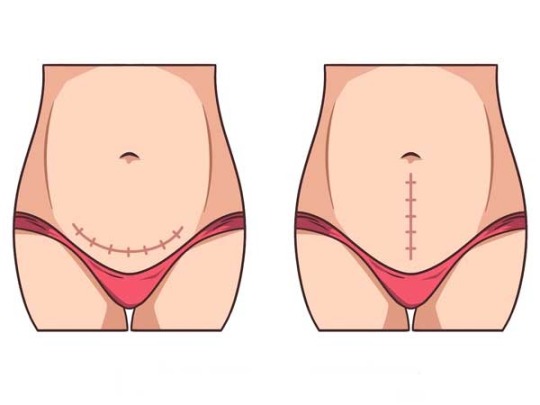
There are various types of abdominoplasty procedures, namely traditional and mini-abdominoplasty and more. In these cases, the surgeon makes incisions along the lower abdomen and then removes the unwanted fat cells.
Traditional abdominoplasty involves making larger incisions than mini-abdominoplasties. Mini-abdominoplasties are less invasive and result in smaller scars. However, they are still considered a major operation and require general anesthesia.
Mini-abdominoplasty is not suitable for people who have a lot of loose skin and a high risk of complications. Traditional abdominoplasty is ideal for patients with moderate amounts of loose skin.
Ultrasonic liposuction uses high-frequency sound waves to break down adipose tissue. Fat cells are then separated from the surrounding muscle tissue. This process does not require any cuts, stitches, or scars. The entire procedure takes place under local anesthesia. Patients can expect to go home the same day. Ultrasonic liposuction is best suited for patients with moderate amounts of body fat.
Laser Abdominoplasty uses laser technology to remove the outer layers of fat. This treatment is known to produce the best results on stubborn pockets of fat that are difficult to reach with conventional methods. Laser Abdominoplasty involves no incisions or cutting, just intense pulsed light that breaks down fat cells while causing minimal damage to the surrounding tissues. While the healing process takes longer than traditional liposuction, the results last much longer.
Lipo Abdominoplasty is a combination of both ultrasound and laser treatments. This means that the patient receives ultrasound waves to break down fatty deposits. Afterward, the patient undergoes laser abrasion to remove those remaining pockets of fat.
Why do people opt for tummy tuck surgery?
To remove excess fat
To improve contour
Cosmetic enhancement
Treatment of obesity
Bodybuilding
The tummy tuck procedure: What all does it include?
The surgery starts with making an incision along the navel. Next, the surgeon makes several small incisions around the belly button. These incisions allow the surgeon to access the underlying layers of muscle and connective tissue. After the explosion of these layers, the surgeon carefully removes the excess skin using a scalpel. Finally, the surgeon closes the wound using sutures.
Are there any risks with abdominoplasty? If yes, What are they?

There are always risks with any type of surgery. The risk of complications increases if the patient has a history of smoking, diabetes, high blood pressure, heart disease, kidney problems, or obesity.
A few risks with abdominoplasty, include infections, blood clots, bruising, scarring, pain, numbness, and swelling. Usually, these complications occur within the first 24 hours after surgery. There may be less risk if the patient avoids taking certain medications before having the procedure.
How long does it take to recover from abdominoplasty? How much scarring occurs?
Recovery time varies depending on the extent of the surgery. Most people return home the same day. However, some patients stay overnight in the hospital. Most patients feel well enough to go back to work within three days. You’ll need to start off slowly. You should avoid strenuous activities and heavy lifting for at least 3 months post-surgery. While you might feel fine right away, many people experience soreness and stiffness in their abdominal muscles for several days after a tummy tuck procedure.
In fact, you might even find yourself having trouble getting comfortable in certain positions. Your doctor will tell you how you can get back to your normal activities once you feel ready. If you do decide to resume exercise, your physical therapist can help you plan out a safe and effective workout routine. There is no way to prevent scarring.
Who all should go for a Tummy Tuck Surgery?

The best candidates for this type of cosmetic surgery are women over age 35 who have had children. Patients under this age group have still likely experienced significant changes in their hormonal levels and their body's ability to retain water. These factors could lead to sagging skin and unwanted bulging.
Also, patients in this group are frequently overweight and have difficulty losing that extra weight once they've achieved their ideal body size. If a person chooses to undergo this procedure, he or she should consult with a plastic surgeon well before the operation to discuss the risks and benefits, and what results to expect.
What is the recovery time after the surgery?
The recovery period following an abdominoplasty varies depending on the extent of the surgery. Patients who have had a tummy tuck may experience some discomfort after the initial healing process. However, they should expect to recover fully within two weeks. Patients who have undergone a full-body lift may take longer to heal than those who only have had their tummy tucks removed.
The Pros of Getting a Tummy Tuck
A tummy tuck is a popular option for many women because it can help them achieve their ideal body shape. After having a baby and losing a lot of weight, many women find themselves with sagging skin and flabby abs. By removing this excess skin and tightening the underlying muscles, a tummy tuck can give you a slimmer, firmer stomach. Plus, since the surgery involves removing excess skin, it won't leave you looking bloated and puffy.
Another perk of a tummy tuck is that it can eliminate back pain caused by excessive skin hanging over the waistline. In addition, it can improve posture and reduce the risk of developing lower back problems later in life. However, while tummy tucks can provide these benefits, they aren't always successful.
The Cons of Having a Tummy Tuck (And What You Can Do About Them)
While a tummy tuck provides numerous advantages, it comes with its own set of disadvantages. One major drawback is the amount of time it takes to heal. Another potential issue is the fact that a tummy tuck doesn't completely fix the problem of sagging skin. Even though it removes excess skin, it can't get rid of the underlying layers of fat and collagen. So while a tummy tuck might smooth out your stomach, it won't necessarily tighten it up.
In addition, tummy tucks don't work well for people with extremely high levels of body fat. Since the procedure removes skin from the entire stomach area, it can actually cause more fat to accumulate in the remaining skin. As a result, you'll likely end up with larger pockets of fat than before.
Also, a tummy tuck is not suitable for people who already have a lot of loose skin covering their stomachs. Because the procedure removes skin from your entire belly, it could cause further stretch marks to appear on your torso.
Finally, a tummy tuck can be expensive. According to the American Society of Plastic Surgeons, the average cost of a tummy tuck ranges from $8,000-$10,000. That said, it's important to note that the price varies depending on the amount of skin and tissue removed.
The Final Words,
There are many risks with tummy tuck surgery including anesthesia-related problems, blood clots, infections, and nerve damage. If you have any concerns about your medical history, discuss them with your surgeon before undergoing the operation. You may need to take antibiotics prior to and following the surgery to prevent infection. Your doctor may prescribe additional medications if necessary.
Read the full article
0 notes
Text
Thyroid in Hindi - थायराइड क्या है और जानिए इसके कारण, लक्षण, निदान और घरेलू उपचार?

थायरॉइड क्या है? (What is Thyroid in Hindi?)

Thyroid in Hindi - सबसे पहले ये समझना जरूरी है कि ये अपने आप में किसी बीमारी का नाम नहीं है, लेकिन ये थायराइड ग्लैंड की कार्यप्रणाली से जुड़ी समस्या है, क्योंकि इसकी वजह से कई और स्वास्थ्य समस्याएं पैदा हो सकती है, इसलिए इसके प्रति सजगता जरूरी है। दरअसल ये ग्लैंड गले के निचले हिस्से में स्थित होता है, इसके निचले हिस्से में खास तरह के हार्मोन टी-3 और टी-4 का स्त्राव होता है। जिसकी मात्रा के असंतुलन का असर सेहत पर भी पड़ता है।
बच्चों में थायराइड - Thyroid in Children in Hindi
थायराइड जैसी समस्या बड़ों को होने वाली समस्या है, लेकिन आजकल थायराइड (Thyroid in Hindi) बच्चों को भी हो सकता है। पुरुषों और बच्चों की तुलना में महिलाओं को थायराइड की समस्या अधिक होती है। बच्चों में ये समस्या तब होती है जब आप बच्चों के खानपान की आदतों पर अच्छे से ध्यान नहीं देते हैं। इसमें गले में मौजूद तिलती के आकार की एक ग्रंथि होती है। ये ग्रंथि हार्मोन का निर्माण करती है। ये शरीर की सभी कोशिकाों को ठीक से काम करने के लिए थायराइड हार्मोन की आवश्यकता होती है। थायराइड हार्मोन बॉडी की कई गतिविधियों को कंट्रोल करने का काम करता है, जैसे बॉडी कितनी तेजी से ऊर्जा का इस्तेमाल करती है और दिल कितनी तेजी से धड़कता है।
साथ ही ये हार्मोन शरीर के वजन, तापमान, मांसपेशियों और मूड को कंट्रोल करने में भी महत्वपूर्ण भूमिका निभाता है। वहीं थायराइड (Thyroid in Hindi) हार्मोन के अंसतुलित होने पर इसके द्वारा की जाने वाली गतिविधियों पर नकारात्मक प्रभाव डालता है।
थायरॉइड रोग के प्रकार (Thyroid Types in Hindi)
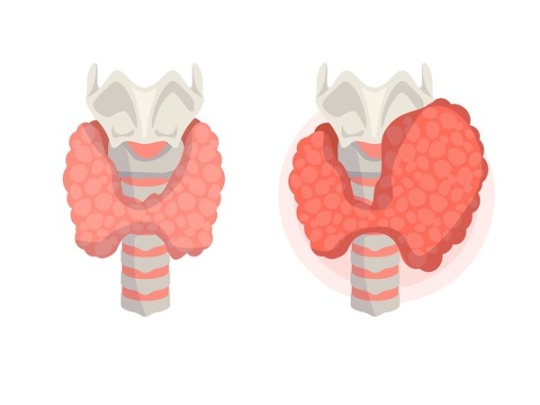
थायराइड हार्मोन मेटाबोलिक रेट, भोजन ग्रहण करने और थर्मोजेनेसिस को कंट्रोल करने में अहम भूमिका निभाता है। हाइपरथायराइडिज्म में थायराइड हार्मोन अधिक मात्रा में बनने लगता है। इसमें टी-3 और टी-4 का लेवल बढ़ने और टीएसएच का लेवल घटने लगता है। कभी-कभी थायराइड ग्रंथि की सूजन की वजह से स्थायी तौर पर हाइपोथाइराडिजम हो सकता है।
साथ ही थायराइड (Thyroid in Hindi) का दूसरा प्रकार है हाइपरथाइराडिज्म जिसमें थायराइड हार्मोन कम बनने लगता है और टी-3 और टी-4 की सीरम लेवल घटने और टीएसएच का लेवल बढ़ने लगता है।
थायराइड से जुड़ी सामान्य समस्याएं -
- हाइपोथायरोडिज्म - इसमें थायराइड ग्रंथ के अधिक सक्रिय होने की वजह से थायराइड हार्मोन का अत्यधिक स्त्राव होने लगता है।
- हाइपोथायराइ़डि ज्म - इसमें थायराइड ग्रंथि सामान्य से कम मात्रा में थायराइड हार्मोन का स्त्राव करती है।
- थायराइड कैंसर - एंडोक्राइन ट्यूमर का सबसे खतरनाक रूप कैंसर ही है। ऊतकों के आधार पर थायराइड कैंसर कुछ इस प्रकार में वर्गीकृत किया जा सकता है।
थायरॉइड ग्रंथि की अतिसक्रियता (Hyperthyrodism)

थायराइड ग्रंथि की अतिसक्रियता की वजह से शरीर में मेटाबोलिज्म बढ़ जाता है, जिसकी वजह से कुछ इस प्रकार की परेशानियां उत्पन्न होने लगती है -
घबराहट
नींद न आना
चिड़चिड़ापन रहना
हाथों में कंपन
अधिक पसीना आना
दिल की धड़कन का बढ़ना
वजन अचनाक घटना
अत्यधिक भूख लगना
मांसपेशियों में कमजोरी और दर्द रहना
महिलाओं में मासिक धर्म की अनियमित रहना
बालों का पतला होने या अधिक झड़ना
ओस्टियोपोरोसिस से हड्डियों में कैल्शियम तेजी से खत्म होना आदि।
थायरॉइड ग्रंथि की अल्पसक्रियता
थायराइड (Thyroid in Hindi) की अल्पसक्रियता की वजह से हाइपोथायरायडिज्म हो जाता है, जिसकी वजह से कुछ इस प्रकार की परेशानियां होने लगती है -
धड़कनो का धीमा होना
हमेशा थकावट का अनुभव
सर्दी के प्रति अधिक संवेदनशील
वजन का बढ़ना
पसीना नहीं आना या कम आना
स्किन में सूखापन और खुजली होना
जोड़ों में दर्द और मांसपेशियों में ऐठन
बालों का अधिक झड़ना
कब्ज की समस्या
नाखुनों का पतला होकर टूटना
कोलेस्ट्रॉल लेवल बढ़ना
मासिक धर्म में अनियमितता आना
बार-बार भूलना
आंखों में सूजन
कब्ज रहना
सोचने-समझने में परेशानी होना
थायरॉइड रोग होने के कारण (Thyroid Causes in Hindi)
थायराइड (Thyroid in Hindi) से जुड़े रोग होने के काफी कारण है, जिन्हें ध्यान में रखकर इस बीमारी से शुरुआती दौर में ही बचा जा सकता है और इसके कारण है -
जरूरत से ज्यादा सोया प्रोटीन, कैप्सूल और पाउड का सेवन करना
अधिक स्ट्रेस लेना
दवाओं के साइड इफेक्ट की वजह से भी थायराइड हो सकता है
धूम्रपान करना
आयोडिन की कमी या अधिकता
ये अनुवांशिक हो सकता है यदि आपके परिवार में किसी को थायराइड की बीमारी है तो आपको भी समस्या के होने के अधिक होने चांसेस है।
हाशिमोटो रोग, ग्रेव्स रोग, ग्वाइटर जैसे कुछ खास रोग भी इस बीमारी के लिए जिम्मेदार हो सकते हैं।
प्रेग्नेंसी के समय औरत के शरीर में बड़े पैमाने पर हार्मोनल बदलाव होते हैं, जिसकी वजह से थायराइड (Thyroid in Hindi) हार्मोन प्रभावित हो सकते हैं।
अन्य कारण
1. हाशिमोटो रोग (Hashimoto’s disease)
ये डिजीज थायराइड ग्रंथि के किसी एक भाग को निक्रिय बना दें है।
2. थायरॉइड ग्रंथि में सूजन (Thyroiditis)
ये थायराइड (Thyroid in Hindi) ग्रंथि में सूजन आने की वजह से होती है। इसकी शुरूआत में इसमे थायराइड हार्मोन का अधिक उत्पादन होता है और बाद में इसमें कमी आ जाती है। इस कारण हाइपोथायरायडिज्म होता है। कई बार ये महिलाओं में गर्भावस्था के बाद देखा जाता है।
3. ग्रेव्स रोग (Graves–disease)
ग्रेव्स रोग व्यस्क व्यक्तियों में हाइपोथायरायडिज्म होने का मुख्य वजह है। इस बीमारी में शरीर की रोग प्रतिक्षा प्रणाली ऐसे एंटीबायोडिट्स का उत्पादन करने लगती है जो TSH को बढ़ाती है। ये अनुवांशिक बीमारी है जो पीढ़ी दर पीढ़ी चलती है।
4. गण्डमाला रोग (Goitre)
ये रोग घेंघा डिजीज की वजह से भी हो सकता है।
5. विटामिन बी12 (Vitamin B12)
विटामिन बी 12 की वजह से हाइपोथारायडिज्म हो सकता है।
थायराइड को कैसे करें कंट्रोल - Tips to control Thyroid
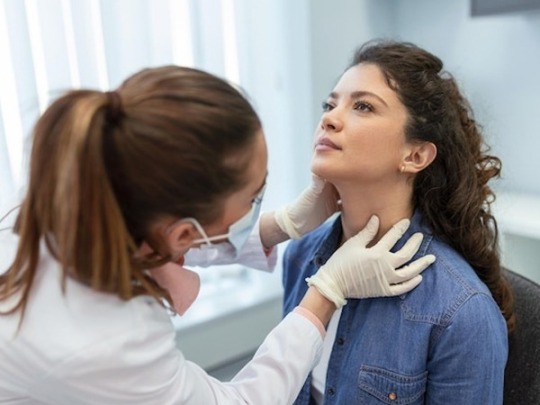
थायराइड ग्लैंड में हार्मोन का बैलेंस बिगड़ने की वजह से ये समस्या होती है। थायराइड (Thyroid in Hindi) को कंट्रोल करने के लिए एक्सरसाइज और दवा ये तो लाभ मिलते है। साथ ही ऐसी डाइट भी बेहद मायने रखती है जो थायराइड को कंट्रोल करें और वह कुछ इस प्रकार है -
1. जंक फूड दूर रहे (stay away from junk food)
जंक फूड और प्रोसेस्ड फूड को अपने जीवन से हटा दें। प्रोसेस्ड फूड ने हमारे दैनिक जीवन में ऐसी पैठ बना ली है कि, यह एक गंभीर परीक्षा की तरह लग सकता है, लेकिन एक बार जब आप अपने जीवन से सही चीजों की पहचानना और हटाना सीख जाते हैं, तो आप अपने स्वास्थ्य में एक स्पष्ट सुधार देखेंगे।
2. नियमित व्यायाम (Regular Exercise)
हमारा जीवन हमारे पूर्वजों की तुलना में बहुत अधिक गतिहीन है और यही कारण है कि हमें बहुत अधिक स्वास्थ्य समस्याएं हैं। उस शरीर को हिलाएं चाहे वह तेज चलना, नृत्य, योग या अपनी पसंद की कोई अन्य गतिविधि हो। इसका उद्देश्य ज्यादा से ज्यादा कैलोरी बर्न करना है।
3. धीरे खाओ (Eat Slow)
यह सुनने में भले ही अच्छा लगे, लेकिन अपने भोजन में जल्दबाजी करने से आपके शरीर को तृप्त होने का मौका नहीं मिलता। सोच-समझकर खाना खाने और जानबूझकर चबाकर खाने से थायराइड (Thyroid in Hindi) और दिमाग के बीच संबंध बन जाता है जिससे आप अपने भोजन से अधिक संतुष्ट हो जाते हैं। चूंकि थायरॉयड ग्रंथि चयापचय के लिए जिम्मेदार है, इसलिए धीमी गति से खाने से चयापचय प्रक्रियाओं को बढ़ाने में मदद मिलती है।
4. योग (Yoga)
योग आसनों के चमत्कारों से दुनिया जाग रही है। योग के अभ्यास से कई लोगों के स्वास्थ्य में सुधार हुआ है। संपूर्ण अंतःस्रावी तंत्र योग के प्रति अच्छी प्रतिक्रिया देता है। विशेष रूप से फायदेमंद है शोल्डर स्टैंड थायराइड स्वास्थ्य के लिए।
5. कुक योर ग्रीन्स (Cook Your Greens)
कुछ क्रूस वाली सब्जियां अपने प्राकृतिक रूप में खाने से थायरॉयड ग्रंथि (Thyroid in Hindi) के इष्टतम कामकाज में बाधा आती है। तो गोभी, गोभी, ब्रसेल्स स्प्राउट्स, ब्रोकोली और फूलगोभी के अपने हिस्से को स्मूदी और सलाद में नहीं बल्कि उनके पके हुए संस्करणों में लें। अपने कच्चे रूप में इन सब्जियों में गोइट्रोजेन होते हैं जो थायरॉइड ग्रंथि के संतुलन को बिगाड़ देते हैं।
6. वसा खाएं (Eat the Fat)
थायरॉइड ग्रंथि बेहतर ढंग से काम करती है जब इसे मक्खन और घी जैसे पर्याप्त स्नेहक प्रदान किए जाते हैं। इसलिए यदि आप डेयरी-मुक्त जा रहे हैं या यदि आप कम वसा वाले आहार को पसंद करते हैं, तो आप बदलना चाह सकते हैं।
7. प्रोबायोटिक्स खाएं (Eat Probiotics)
एक और चीज जो थायरॉयड ग्रंथि को संतुलन की स्थिति तक पहुंचने में मदद करती है, वह है भोजन में पर्याप्त प्रोबायोटिक्स होना। इसलिए दही, एप्पल साइडर विनेगर और टेम्पेह सभी को अपने आहार का हिस्सा बनाना चाहिए। ये गैस्ट्रोइंटेस्टाइनल स्वास्थ्य में सुधार करते हैं और थायराइड (Thyroid in Hindi) के मुद्दों से निपटने में मदद करते हैं।
थायरॉइड रोग का घरेलू इलाज करने के उपाय (Home Remedies for Thyroid Disease in Hindi)

आप थायराइड (Thyroid in Hindi) को नीचे दिए हुए घरेलू उपचार की मदद से इसमें सुधार पाया जा सकता है जो कुछ इस प्रकार है -
1. मुलेठी से थायरॉइड का इलाज (Mulethi: Home Remedies for Thyroid Treatment in Hindi)
जन्हें थायराइड है और आप इसे ठीक करना चाहते हैं तो मुलेठी का सेवन आपके लिए बहुत लाभदायक होता है। इसमें ऐसे तत्व मौजूद होते हैं, जो थायराइड ग्रंथी को संतुलित करके थकान को एनर्जी में बदल देता है।
2. अश्वगंधा चूर्ण के सेवन से थायरॉइड का इलाज (Ashwagandha Churna: Home Remedy for Thyroid in Hindi)
अश्वगंधा थायराइड को कंट्रोल करने में काफी लाभदायक औषधि मानी जाती है, इसके लिए आप चाहें तो इसकी पत्तियों या जड़ों को उबाल कर पी सकते हैं। या फिर 200 से 1100 मिलीग्राम अश्वगंधा चूर्ण लें और इसकी चाय में मिलाकर इस्तेमाल करें। आप चाहें तो इसका टेस्ट बढ़ाने के लिए इसमें तुलसी के पत्ते भी मिलाकर पी सकते हैं।
3. थायरॉइड का घरेलू उपचार तुलसी से (Tulsi: Home Remedies to Treat Thyroid in Hindi)
थायराइड की समस्या से छुटकारा पाने के लिए रोजाना सुबह खाली पेट लौकी का जूस पिएं। इसके बाद एक गिलास ताजे पानी में तुलसी की एक दो बून्द और कुछ ना खाएं। रोजाना ऐसा करने से थायराइड की बीमारी (Thyroid in Hindi) जल्दी ठीक हो जाती है।
4. थायरॉइड का घरेलू इलाज हरी धनिया से (Dhaniya: Home Remedy for Thyroid Treatment in Hindi)
धनिया में एंटीऑक्सीडेंट और विटामिन का लेवल स्वाभाविक रूप से थायराइड को ठीक करने और थायराइड हार्मोन में उत्पादन को कंट्रोल करने का काम करता है। आप रात भर एक गिलास पानी में 2 चम्मच धनिया के बीज भिगोकर इसका उपाय बना सकते हैं।
5. त्रिफला चूर्ण से थायरॉइड से लाभ (Triphala: Home Remedies to Thyroid Treatment in Hindi)
त्रिफला जैसी औषधी से थायराइड हार्मोन (Thyroid in Hindi) को काफी हद तक कंट्रोल किया जा सकता है। थायराइड को कंट्रोल करने के लिए त्रिफला चूर्ण भी काफी प्रभावी होता है। त्रिफला तीन आयुर्वेदिक औषधियों को मिश्रण होता है। रोजाना गर्मी पानी के साथ त्रिफला चूर्ण का सेवन करने से थायराइड हार्मोन कंट्रोल हो सकता है।
6. हल्दी और दूध से थायरॉइड की बीमारी का इलाज (Turmeric and Milk: Home Remedies for Thyroid Treatment in Hindi)
थाइराइड की समस्या में हल्दी दूध का सेवन अधिक लाभदायक होता है। इसके सेवन से आपके शरीर में थाइराइड का स्तर हमेशा कंट्रोलमें रहता है। साथ ही आप चाहे तो थाइराइड की समस्या से छुटकारा पाने के लिए हल्दी को भुनकर भी खा सकते हैं।
7. लौकी के उपयोग से थायरॉइड में फायदा (Gourd: Home Remedy to Treat Thyroid Disease in Hindi)
लौकी का जूस थायराइड के लिए फायदेमंद साबित होता है। लौकी के जूस को सुबह खाली पेट लेने थायराइड कम (Thyroid in Hindi) होने लगता है। लौकी का जूस पीने से एनर्जी बूस्ट होती है। इससे शरीर में ताकत बनी रहती है।
8. काली मिर्च के सेवन से थायरॉइड का उपचार (Black Pepper: Home Remedy for Thyroid Treatment in Hindi)
काली मिर्च थायराइड में काफी राहत पहुंचाती है। आप खड़ी काली मिर्च या पाउडर के रूप में इसका सेवन कर सकते हैं। आप थायराइड की बीमारी कहने को तो बीमारी होती है, लेकिन ये बहुत ही गंभीर साबित भी हो सकती है, इसलिए थायराइड के लक्षणों को ध्यान में रखें और कोई भी लक्षण प्रकट होने पर तुरंत चेकअप करवाएं।
9. थायरॉइड के इलाज में उपयोगी है शिग्रु पत्र, कांचनार और पुनर्नवा का काढ़ा (Shignu Patra, Kanchnar and Punarnva decoction helps in Treatment of Thyroid)
आयुर्वोदिक एक्सपर्ट्स के मुताबिक, शिग्रु पत्र और पुनर्नवा इन सभी हर्ब में एंटी-इंफ्लेमेटरी गुण पाए जाते हैं जो थायराइड की सूजन में आराम देती है, इसलिए यदि आप थायराइड (Thyroid in Hindi) से परेशान है तो कांचनार, शिग्रु पत्र और पुनर्नवा के काढ़े का इस्तेमाल कर सकते है।
10. थायरॉइड की समस्या में आराम पहुंचाता है अलसी का चूर्ण (Benefits of Flaxseed Powder for Thyroid in Hindi)
अलसी का बीज सेहत के लिए काफी फायदेमंद है। इसमें कैलोरी, सोडियम, पोटैशियम, कार्बोहाइड्रेड, प्रोटीन, कैल्शियम के अलावा अधिक मात्रा में ओमेगा-3 फैटी एसिड पाया जाता है जो थायराइड के साथ-साथ वजन कम करने में भी मदद करता है।
11. थायरॉइड के इलाज में सहायक है नारियल का तेल (Benefits of Coconut Oil in Treatment of Thyroid in Hindi)
जिन लोगोंं के थायराइड के कारण हाथ और पैर ठंडे रहते हैं, उन लोगों के लिए ये तेल बहुत फायदेमंद होता है। आप नारियल तेल को अपनी डाइट में शामिल करने के लिए इसके तेल में सब्जियां भी पका सकते हैं। थायराइड की समस्या को कंट्रोल (Thyroid in Hindi) करने के लिए आप हफ्ते में 3-4 बार नारियल पानी का सेवन भी कर सकते हैं।
थायरॉइड के दौरान आपका खान-पान (Your Diet in Thyroid Disease)
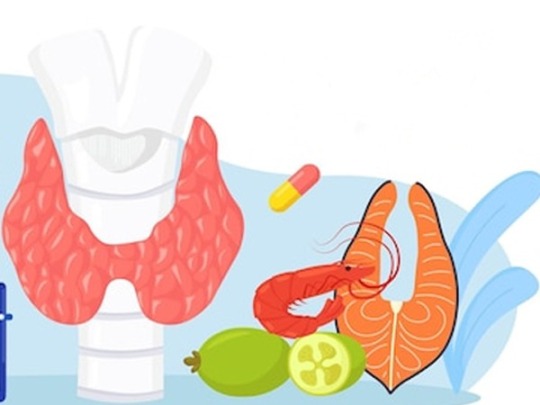
थायराइड की समस्या (Thyroid in Hindi) में खान-पान का बहुत ध्यान रखना पड़ता है जो कुछ स प्रकार है -
थायराइड की बीमारी (Thyroid in Hindi) में कम फेट वाले आहार का सेवन करें।
अधिक से अधिक फलों और सब्जियों को भोजन में शामिल करें।
थायराइड के घरेलू उपचार के अंतर्गत दूध और दही का अधिक सेवन करना चाहिए।
थायराइड के घरेलू इलाज के लिए आप विटामिन-ए का एक अधिक सेवन करें। इसके लिए गाजर खा सकते हैं।
गेंहू और ज्वार का सेवन करें।
मुलेठी मेें मौजूद तत्व थायराइ़ड ग्रंथि को संतुलित बनाते हैं ये थायराइड में कैंसर को बढ़ने से भी रोकता है।
आयोडिन युक्त आहार का सेवन करें।
पोषक तत्वों से भरपूर भोजन करें। मिनरल्स और विटामिन से युक्त भोजन लेने से थायराइड नियंत्रण करने में सहायता करता है।
साथ ही हरी पत्तेदार सब्जियों का सेवन करें। इनमें उचित मात्रा में आयरन होता है, जो थायराइड (Thyroid in Hindi) के रोगियों के लिए फायदेमंद है।
आप नट्स जैसे बादाम, काजू और सूरजमुखी के बीजों का अधिक सेवन करें। साथ ही इनमें कॉपर की पर्याप्त मात्रा होती है, जो थायराइड (Thyroid in Hindi) में लाभदायक होती है।
थायरॉइड के दौरान जीवनशैली (Your Lifestyle for Thyroid Disease)
थायराइड के समय जीवनशैली (Thyroid in Hindi) में ये सब बदलाव करना चाहिए -
स्ट्रेस मुक्त जीवन जीने की कोशिश करें
रोजाना योगासन करें
थायरॉइड के लिए परहेज (Avoid These in Thyroid)
जंक फूड एवं प्रिजरवेटिव युक्त आहार को नहीं खाएं।
धूम्रपान, एल्कोहल आदि नशीले पदार्थों से बचें।
योगासन से थायरॉइड का उपचार (Yoga for Thyroid Disease)
थायरॉइड (Thyroid in Hindi) का उपचार इन योगासन द्वारा किया जा सकता है जो कुछ इस प्रकार है -
सूर्य नमस्कार
पवनमुक्तासन
सर्वांगासन
हलासन
उष्ट्रासन
मत्स्यासन
भुजंगासन
निष्कर्ष (conclusion)
आप हमारे आर्टिकल के द्वारा थायराइड की समस्या से छुटकारा पा सकते हैं, लेकिन इससे पहले थायराइड का अच्छे से जांच करवाएं और डॉक्टर सलाह लें। इसे आगे जारी रखने के लिए इस TV Health पर क्लिक करें।
Read the full article
0 notes
Text
Tummy Tuck Surgery: Do's & Don'ts of Abdominoplasty

An Introduction to the Tummy Tuck Surgery

Abdominoplasty (Tummy Tuck) is a surgical procedure performed to remove excess skin and fat from the abdomen area. It is commonly performed to create a smaller waistline and reduce the appearance of the abdomen bulging over the clothing. An abdominoplasty may be done alone, or along with other procedures, depending on the amount of fat removal desired. Abdominoplasty is often combined with breast reduction surgery, liposuction, and thigh lift.
The surgery involves making incisions around the belly button and removing excess skin and fat from below the navel. The surgeon may use a combination of techniques including liposuction, laser resurfacing, and chemical peels to achieve the desired results.
In general, abdominoplasty is performed under general anesthesia and requires about six hours of recovery time. In some cases, the patient may experience mild discomfort following the procedure. However, many patients report feeling much improved after their tummy tuck.
One of the most common reasons people choose to have abdominoplasty is to decrease their weight. Many women who have had children find themselves struggling with postpartum weight gain and may choose to undergo tummy tuck surgery which reduces their waist size. Other reasons include appearance enhancement after pregnancy, removal of stretch marks, and treatment of hernias.
However, not everyone who wants a tummy tuck has been pregnant or lost significant amounts of weight. Other reasons a person may seek out a tummy tuck include having stretch marks, bulges, or rippling following childbirth. People with these conditions often find surgery to be worthwhile in the long run.
Types of abdominoplasty surgery:

There are various types of abdominoplasty procedures, namely traditional and mini-abdominoplasty and more. In these cases, the surgeon makes incisions along the lower abdomen and then removes the unwanted fat cells.
Traditional abdominoplasty involves making larger incisions than mini-abdominoplasties. Mini-abdominoplasties are less invasive and result in smaller scars. However, they are still considered a major operation and require general anesthesia.
Mini-abdominoplasty is not suitable for people who have a lot of loose skin and a high risk of complications. Traditional abdominoplasty is ideal for patients with moderate amounts of loose skin.
Ultrasonic liposuction uses high-frequency sound waves to break down adipose tissue. Fat cells are then separated from the surrounding muscle tissue. This process does not require any cuts, stitches, or scars. The entire procedure takes place under local anesthesia. Patients can expect to go home the same day. Ultrasonic liposuction is best suited for patients with moderate amounts of body fat.
Laser Abdominoplasty uses laser technology to remove the outer layers of fat. This treatment is known to produce the best results on stubborn pockets of fat that are difficult to reach with conventional methods. Laser Abdominoplasty involves no incisions or cutting, just intense pulsed light that breaks down fat cells while causing minimal damage to the surrounding tissues. While the healing process takes longer than traditional liposuction, the results last much longer.
Lipo Abdominoplasty is a combination of both ultrasound and laser treatments. This means that the patient receives ultrasound waves to break down fatty deposits. Afterward, the patient undergoes laser abrasion to remove those remaining pockets of fat.
Why do people opt for tummy tuck surgery?
To remove excess fat
To improve contour
Cosmetic enhancement
Treatment of obesity
Bodybuilding
The tummy tuck procedure: What all does it include?
The surgery starts with making an incision along the navel. Next, the surgeon makes several small incisions around the belly button. These incisions allow the surgeon to access the underlying layers of muscle and connective tissue. After the explosion of these layers, the surgeon carefully removes the excess skin using a scalpel. Finally, the surgeon closes the wound using sutures.
Are there any risks with abdominoplasty? If yes, What are they?

There are always risks with any type of surgery. The risk of complications increases if the patient has a history of smoking, diabetes, high blood pressure, heart disease, kidney problems, or obesity.
A few risks with abdominoplasty, include infections, blood clots, bruising, scarring, pain, numbness, and swelling. Usually, these complications occur within the first 24 hours after surgery. There may be less risk if the patient avoids taking certain medications before having the procedure.
How long does it take to recover from abdominoplasty? How much scarring occurs?
Recovery time varies depending on the extent of the surgery. Most people return home the same day. However, some patients stay overnight in the hospital. Most patients feel well enough to go back to work within three days. You’ll need to start off slowly. You should avoid strenuous activities and heavy lifting for at least 3 months post-surgery. While you might feel fine right away, many people experience soreness and stiffness in their abdominal muscles for several days after a tummy tuck procedure.
In fact, you might even find yourself having trouble getting comfortable in certain positions. Your doctor will tell you how you can get back to your normal activities once you feel ready. If you do decide to resume exercise, your physical therapist can help you plan out a safe and effective workout routine. There is no way to prevent scarring.
Who all should go for a Tummy Tuck Surgery?

The best candidates for this type of cosmetic surgery are women over age 35 who have had children. Patients under this age group have still likely experienced significant changes in their hormonal levels and their body's ability to retain water. These factors could lead to sagging skin and unwanted bulging.
Also, patients in this group are frequently overweight and have difficulty losing that extra weight once they've achieved their ideal body size. If a person chooses to undergo this procedure, he or she should consult with a plastic surgeon well before the operation to discuss the risks and benefits, and what results to expect.
What is the recovery time after the surgery?
The recovery period following an abdominoplasty varies depending on the extent of the surgery. Patients who have had a tummy tuck may experience some discomfort after the initial healing process. However, they should expect to recover fully within two weeks. Patients who have undergone a full-body lift may take longer to heal than those who only have had their tummy tucks removed.
The Pros of Getting a Tummy Tuck
A tummy tuck is a popular option for many women because it can help them achieve their ideal body shape. After having a baby and losing a lot of weight, many women find themselves with sagging skin and flabby abs. By removing this excess skin and tightening the underlying muscles, a tummy tuck can give you a slimmer, firmer stomach. Plus, since the surgery involves removing excess skin, it won't leave you looking bloated and puffy.
Another perk of a tummy tuck is that it can eliminate back pain caused by excessive skin hanging over the waistline. In addition, it can improve posture and reduce the risk of developing lower back problems later in life. However, while tummy tucks can provide these benefits, they aren't always successful.
The Cons of Having a Tummy Tuck (And What You Can Do About Them)
While a tummy tuck provides numerous advantages, it comes with its own set of disadvantages. One major drawback is the amount of time it takes to heal. Another potential issue is the fact that a tummy tuck doesn't completely fix the problem of sagging skin. Even though it removes excess skin, it can't get rid of the underlying layers of fat and collagen. So while a tummy tuck might smooth out your stomach, it won't necessarily tighten it up.
In addition, tummy tucks don't work well for people with extremely high levels of body fat. Since the procedure removes skin from the entire stomach area, it can actually cause more fat to accumulate in the remaining skin. As a result, you'll likely end up with larger pockets of fat than before.
Also, a tummy tuck is not suitable for people who already have a lot of loose skin covering their stomachs. Because the procedure removes skin from your entire belly, it could cause further stretch marks to appear on your torso.
Finally, a tummy tuck can be expensive. According to the American Society of Plastic Surgeons, the average cost of a tummy tuck ranges from $8,000-$10,000. That said, it's important to note that the price varies depending on the amount of skin and tissue removed.
The Final Words,
There are many risks with tummy tuck surgery including anesthesia-related problems, blood clots, infections, and nerve damage. If you have any concerns about your medical history, discuss them with your surgeon before undergoing the operation. You may need to take antibiotics prior to and following the surgery to prevent infection. Your doctor may prescribe additional medications if necessary.
Read the full article
0 notes
Text
Sarcoma: Causes And Risks Of This Deadly Disease
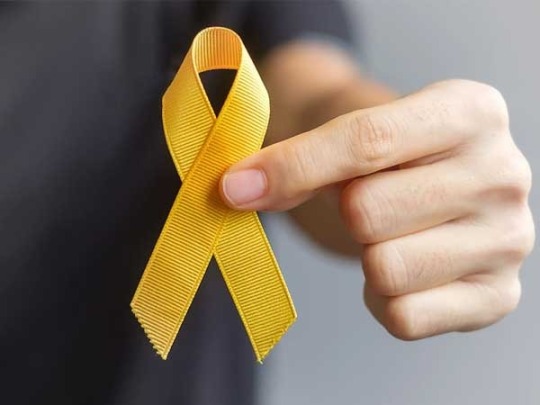
Sarcoma: An Overview of this Disease

Sarcomas are cancers that begin in connective tissue cells (fibroblasts, osteoblasts, etc.). They are malignant tumors that arise from connective tissue where they develop abnormal cells that do not function correctly. Sarcoma are classified according to their location (tissue) and how fast they grow. There are over 100 types of sarcomas. Sarcomas account for about 1-2% of cancer cases in humans.
Soft Tissue Sarcomas: Soft tissue sarcomas arise in any type of connective tissue including muscle and fat. The majority of these types occur in the extremities (arms and legs) and trunk, while others occur in organs such as the heart, lungs, liver, spleen, pancreas, intestines, kidneys, bladder, uterus, ovaries, prostate gland, testicles, thyroid glands, and brain.
Bone Sarcomas: The most common type of bone sarcoma is osteosarcoma, which occurs in the long bones (legs), pelvis, ribs, skull, jawbone, spine, and shoulder blade. Osteosarcomas are particularly aggressive and can metastasize (spread). Symptoms of osteosarcoma may include pain, swelling, redness, warmth, loss of function, and deformity.
The various causes of Sarcoma
A sarcoma is caused by uncontrolled cell division. Normal cells divide to make more normal cells. Cancerous cells do not stop dividing. They multiply rapidly and may invade nearby tissue. Sarcomas are cancerous cells that have lost control of their cell cycle. They continue to divide even after they should have stopped.
Not all sarcomas are cancerous. Benign sarcomas are slow-growing tumors that tend to stay put and do not spread to other parts of the body. Malignant sarcomas are aggressive, fast-growing tumors that often metastasize (spread) to distant sites throughout the body.
Sarcomas That Can Spread to Other Parts of Your Body
When sarcomas spread to other parts of our bodies, we call them metastases. Metastasis means “to travel” or “to go elsewhere.” When sarcomas spread, they move away from where they started and settle in other places in the body. Sarcomas that spread to other parts of us are called metastatic sarcomas.
Metastatic sarcomas can spread to the lung, bones, brain, or other organs. If sarcomas spread to the lungs, we call them pulmonary metastases. Lung metastases happen when sarcomas break off from the original tumor and enter the bloodstream. Then, these sarcomas float around until they find a place to land. Once they reach the lungs, they can cause problems like pneumonia. Bones are also a common site for sarcomas to spread. We call this kind of sarcoma bone metastasis. Bone metastases happen when sarcoma cells break off from the original sarcoma and enter
Risk Factors that are associated with Sarcoma
The following factors increase the risk of developing sarcoma:
- Family history of cancer
- History of radiation therapy
- Exposure to certain chemicals
- Occupational exposure to asbestos
- Certain medical conditions (e.g., diabetes)
Understanding the various symptoms of Sarcoma

Symptoms of sarcomas may vary depending on what type of sarcoma you have. Common symptoms include pain, swelling, redness, and sometimes bleeding. Other symptoms include fever, weight loss, fatigue, and difficulty breathing. Sarcomas often spread to nearby organs and lymph nodes. If sarcoma spreads to bones, it may cause fractures and deformities.
Symptoms vary depending on the type of sarcoma. Symptoms may include:
- Swelling and tenderness in the area where the tumor started
- Pain in the affected area
- Soreness in the knee or hip
- Weakness in the leg
- Difficulty walking
- Numbness in the leg
Diagnosis of Sarcoma
A diagnosis of sarcoma is based on a biopsy of the tumor. If the tumor is small, it may not need a biopsy. However, if the tumor is larger than 2 cm, a biopsy should be done. Biopsies are performed using local anesthesia. A needle is inserted into the tumor and liquid is withdrawn. Sometimes, a piece of the tumor is removed. After the biopsy, the area is examined to determine whether any additional tests are necessary.
Tests

If a sarcoma is suspected, imaging studies are often recommended. Imaging tests help doctors look inside the body to find out what is causing symptoms. These tests include X-rays, CT scans, MRI scans, PET scans, and ultrasound exams. Imaging tests may show changes in the size, shape, and density of the tumor.
Tests may include blood tests, urine tests, and genetic testing. Blood tests check for levels of certain substances in the blood. Urine tests examine the number of specific substances excreted in the urine. Genetic tests look for abnormalities in genes.
How to know if you have Sarcoma?
It can take months or even years before sarcomas become apparent. Once they do appear, early detection is critical to successful treatment. Your healthcare provider will perform a physical examination and ask about your medical history. He or she will also order tests to help determine if you have sarcoma. These tests include:
- X-rays – X-rays can reveal changes in bone structure and density.
- CT scan – A computed tomography (CT) scan uses x-ray technology to create detailed images of internal structures.
- MRI – An MRI uses magnetic fields and radio waves to produce high-quality images of the body.
- Biopsy – A biopsy is an invasive procedure where a small sample of cells is taken from the affected area(s) for examination under a microscope.
How you can treat Sarcoma? The Treatment Process

Treatment options depend on the type of tumor, its stage, and how fast it grows. Treatment options include surgery, radiation therapy, chemotherapy, immunotherapy, targeted therapy, and supportive care. Surgery is the primary treatment option for sarcomas. It removes the tumor and nearby normal tissue.
- Surgery: Surgery is the first line of treatment for sarcoma patients. If surgery is not possible due to location, size, or type of sarcoma, then radiation therapy may be used.
- Radiotherapy: Radiotherapy uses high-energy x-rays to kill cancer cells. It works best if the tumor is small and close to the skin surface.
- Chemotherapy: Chemotherapy drugs work by killing cancer cells. Drugs are given intravenously (through veins) or orally (in pill form).
- Targeted Therapy: Targeted therapy uses drugs that target specific parts of the body's DNA. These drugs are designed to block certain genes that cause cancer.
- Immunotherapy: Immunotherapy uses the immune system to fight cancer. Cancer vaccines use substances called antigens to stimulate the immune system. Researchers are studying immunotherapy drugs for sarcoma.
- Biological Response Modifiers: Biological response modifiers are natural substances that help the immune system fight cancer. Examples include interferon alpha, interleukins, colony-stimulating factors, and monoclonal antibodies.
- Other Treatments: Other treatments for sarcoma include bone marrow transplants, stem cell transplants, and gene therapy.
Where can you find sarcoma in the human body?

You can find them in the below types and areas:
- Head & Neck Sarcoma: Head and neck sarcomas are cancers that develop in the head and neck region. You can see these types of cancer in older adults.
- Lung Sarcoma: Lung sarcomas are cancers of the lung that begin in the cells lining the airways. Most people who have lung sarcomas do not know they have them until they experience symptoms. Symptoms of lung sarcomas include coughing, shortness of breath, chest pain, weight loss, fever, and fatigue.
- Breast Cancer: The second leading cause of death among women is breast cancer.
- Stomach Cancer: Stomach cancer is the fifth most common type of cancer in the world. It occurs when abnormal cells divide without control and spread throughout the body. People who are at risk for stomach cancer include those who have chronic ulcers, gastritis, or gastroesophageal reflux disease (GERD).
- Colon Cancer: Colon cancer is the third most common cancer in men and women combined. It begins when normal colon cells become damaged and start dividing uncontrollably. Risk factors for colon cancer include age, family history, diet, obesity, physical activity, smoking, alcohol use, and certain medications.
- Prostate Cancer: The majority of prostate cancer cases occur in men. Prostate cancer develops when prostate cells grow out of control. Men over 50 years old are at higher risk of developing prostate cancer than younger men.
- Skin Cancer: Skin cancer is the most common type of cancer. It starts when skin cells grow out of control and multiply rapidly. Non-melanoma and melanoma are the two main types of skin cancer. Melanomas are skin cancers that originate in pigment-producing cells called melanocytes. Non-melanoma skin cancers are cancers that do not originate in melanocytes.
The conclusion,
Sarcomas may affect any organ system in the body. The survival rates vary depending on the type of sarcoma. However, the five-year survival rate for patients with localized sarcomas is approximately 70%. Sarcomas can recur after surgery if they have spread to nearby lymph nodes or other parts of the body.
Patients who undergo surgery to remove primary sarcoma tumors have a higher chance of survival than those who do not receive surgical intervention.
Read the full article
0 notes
Text
7 Tips to Improve Your Bone Health

7 Tips to Improve Your Bone Health
Read the full article
0 notes
Text
Chlamydia: What you didn't know about silent STIs?

An Introduction To The Silent Killer: Chlamydia

Chlamydia is a sexually transmitted disease caused by bacteria called Chlamydia trachomatis (CT). It is spread via vaginal, anal, or oral sex. Symptoms may not appear right away, but they can include burning while urinating, pain during intercourse, bleeding between menstrual cycles, and discharge from the vagina. If left untreated, chlamydia can lead to infertility, ectopic pregnancy (when the embryo implants outside of the uterus), pelvic inflammatory disease, and chronic pelvic pain.
There are two types of chlamydial infections: acute and chronic. Acute chlamydial infection occurs after exposure to the bacterium. Symptoms may appear within 2-8 weeks. Chronic chlamydial infection often goes undiagnosed.
The Transmission of CT Infection
The transmission of Chlamydia occurs when bacteria enter the genital tract through unprotected sex. Most people who have Chlamydia do not even know they have it. Chlamydia is extremely contagious and gets passed between partners who have never had any symptoms.
A small percentage of women become pregnant after contracting Chlamydia and passing the infection to their unborn child. Infants born to mothers with Chlamydia have an increased risk of developing pneumonia and eye infections.
- Sexual intercourse: The only way to contract chlamydia is if you have unprotected sex with someone who already has it. CT spreads via genital contact with infected secretions, including semen and vaginal fluids.
- Oral sex: Infection may also occur if the penis comes into direct contact with the mouth, especially in an individual who has not had proper oral hygiene practices. A person could unknowingly transmit chlamydia orally after performing cunnilingus or fellatio. Infected sperm cells travel through the bloodstream to infect organs and reproductive systems.
- Contaminated water supplies: Chlamydia is easily contracted from contaminated drinking water. If you drink untreated water while having anal sex, you are at risk of contracting chlamydia. You'll need to boil it for five minutes before consuming it. The CDC recommends boiling water for 20 minutes.
- Touching genitals without washing hands afterward: You can get chlamydia from touching your own genitals before washing your hands thoroughly. Chlamydia can survive on skin surfaces for hours. Wash your genitals well after any sexual activity.
- Sharing needles: Transmission occurs when using drugs and sharing needles. Needles can be reused many times. To prevent spreading infection, use clean syringes with a new needle each time you inject yourself.
- Non-sexual transmission: There is also some evidence that people can spread chlamydia by coughing or sneezing on others. Avoiding bodily fluids can help prevent getting chlamydia.
- Other ways: People can spread chlamydia through blood transfusions, organ transplants, childbirth, breastfeeding, or tattooing. Sexually active women should go regularly for screening. Women who have had two or more partners in the last year or men with multiple partners in their lifetime should also be tested.
Understanding the various symptoms of CT Infection
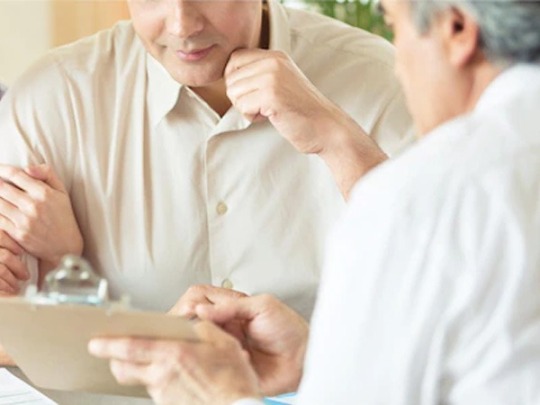
The first symptom of CT is often a burning sensation while urinating. Other symptoms may include pain or discomfort during intercourse, painful urination, bleeding between menstrual cycles, and discharge from the vagina. If left untreated, chlamydia can lead to pelvic inflammatory disease (PID), infertility, ectopic pregnancy, chronic pelvic pain, and even death.
Symptoms of Chlamydia Infection
- Painful urination
- Burning sensation during urination
- Blood in urine
- Discharge from penis or vagina
- Vaginal discharge
- Lower abdominal pain
- Painful intercourse
- Pelvic tenderness
- Difficulty passing urine
- Frequent urination
- Abdominal cramps
- Fever
Symptoms in men commonly include:
- Feeling of burning while urinating
- Penis discharge that is yellow or green
- Inflammation of the lower abdomen
- Symptoms of testicular pain
Women to experience the following symptoms:
- Sexual intercourse that is painful (dyspareunia)
- A discharge of vaginal fluid
- Feeling of burning while urinating
- Lower abdominal pain
- Cervicitis refers to an inflammation of the cervix
- The bleeding that occurs between periods
What are the various risk factors for Chlamydia?

Chlamydia is not contagious but rather a sexually transmitted disease. Since chlamydia cannot be passed from person-to-person, risk factors are mainly associated with sexual activity. A woman who is pregnant can pass the infection along to her unborn child. Other high-risk groups include men and women between 13-25 years old, people with HIV/AIDS, those who have had an abortion, especially if they were under 18 at the time; and anyone who has ever been diagnosed with genital warts.
What are the precautions for chlamydia?
There are ways to prevent getting CT. You should always use condoms if you are engaging in any type of sexual activity. Condoms can prevent and reduce the likelihood of contracting CT. You should also never share needles or syringes with anyone else. This can help prevent the spread of the bacteria.
There are also antiseptics that clean the area around the penis. These products help decrease the risk of spreading the bacteria. Finally, it is important to not have unprotected sex with someone who is sick. Sexually active people should get their tests regularly to check for CT.
Is CT Infection common in individuals?
CT is the most commonly diagnosed bacterial sexually transmitted infection worldwide. CT infections affect men and women equally, and both sexes may transmit the disease to their sexual partners. In 2013, approximately 1.2 million cases of CT were reported globally, including 584 000 among females and 618 000 among males.
There have been several studies conducted in India regarding the prevalence of CT in the general population. A small study in 2000 showed that 2.8% of the female students attending colleges in Delhi had evidence of CT infection. Another study in 2007-08 showed that 4.9% of the married couples attending STD clinics in Chennai had a CT infection.
Since then, there have been no published data on CT prevalence in India. However, a recent study conducted at a tertiary care hospital in New Delhi between January 2014 and December 2015 revealed that 12.4% (n14/112) of the patients who presented with urethritis tested positive for CT.
The high prevalence of CT in India suggests that CT is likely to remain a significant public health problem in the country. Efforts should focus on developing effective strategies to curb the spread of CT among the general population.
Preventing Chlamydial Infection: There are several ways to prevent chlamydial infection:
- Using condoms during sexual activity. Condoms provide protection against STIs including chlamydial infection, but they do not protect against viral STDs.
- Not having sex until after using contraception.
- Consistent use of barrier methods (condoms, dental dams, diaphragms, cervical caps, contraceptive sponges, etc.) during sexual activity.
- Having regular Pap tests. A Pap test looks at cells taken from the cervix and helps detect changes in the cervix that could indicate HPV, HIV, or chlamydial infection early. Women should get Pap tests once per year beginning at the age of 21 years old.
- Get your tests regularly for both HPV and chlamydial infection.
- Avoid high-risk behaviors (frequent drug use, smoking, alcohol abuse, sex work, etc.).
- Take steps to avoid getting in contact with people who have a chlamydial infection.
The Final Takeaways,
- How do I know if I have Chlamydia?
If you think you might have chlamydia, talk to your doctor about testing. Your doctor will do some tests and will then take a sample of fluid from your cervix and send it to a lab for analysis. A test called a nucleic acid amplification test (NAAT) is the best way to diagnose chlamydia.
- What to do if I have Chlamydia?
If you think you have chlamydia, tell your doctor right away. You'll need to start treatment before any complications occur. Treatment for chlamydia includes antibiotics. Talk to your doctor about what kind of antibiotic you should use.
Read the full article
0 notes
Text
Chlamydia: What you didn't know about silent STIs?
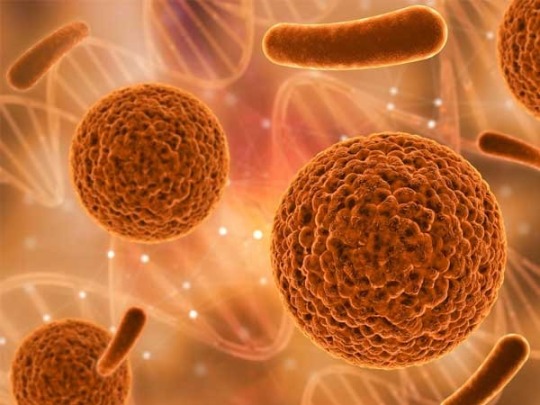
An Introduction To The Silent Killer: Chlamydia

Chlamydia is a sexually transmitted disease caused by bacteria called Chlamydia trachomatis (CT). It is spread via vaginal, anal, or oral sex. Symptoms may not appear right away, but they can include burning while urinating, pain during intercourse, bleeding between menstrual cycles, and discharge from the vagina. If left untreated, chlamydia can lead to infertility, ectopic pregnancy (when the embryo implants outside of the uterus), pelvic inflammatory disease, and chronic pelvic pain.
There are two types of chlamydial infections: acute and chronic. Acute chlamydial infection occurs after exposure to the bacterium. Symptoms may appear within 2-8 weeks. Chronic chlamydial infection often goes undiagnosed.
The Transmission of CT Infection
The transmission of Chlamydia occurs when bacteria enter the genital tract through unprotected sex. Most people who have Chlamydia do not even know they have it. Chlamydia is extremely contagious and gets passed between partners who have never had any symptoms.
A small percentage of women become pregnant after contracting Chlamydia and passing the infection to their unborn child. Infants born to mothers with Chlamydia have an increased risk of developing pneumonia and eye infections.
- Sexual intercourse: The only way to contract chlamydia is if you have unprotected sex with someone who already has it. CT spreads via genital contact with infected secretions, including semen and vaginal fluids.
- Oral sex: Infection may also occur if the penis comes into direct contact with the mouth, especially in an individual who has not had proper oral hygiene practices. A person could unknowingly transmit chlamydia orally after performing cunnilingus or fellatio. Infected sperm cells travel through the bloodstream to infect organs and reproductive systems.
- Contaminated water supplies: Chlamydia is easily contracted from contaminated drinking water. If you drink untreated water while having anal sex, you are at risk of contracting chlamydia. You'll need to boil it for five minutes before consuming it. The CDC recommends boiling water for 20 minutes.
- Touching genitals without washing hands afterward: You can get chlamydia from touching your own genitals before washing your hands thoroughly. Chlamydia can survive on skin surfaces for hours. Wash your genitals well after any sexual activity.
- Sharing needles: Transmission occurs when using drugs and sharing needles. Needles can be reused many times. To prevent spreading infection, use clean syringes with a new needle each time you inject yourself.
- Non-sexual transmission: There is also some evidence that people can spread chlamydia by coughing or sneezing on others. Avoiding bodily fluids can help prevent getting chlamydia.
- Other ways: People can spread chlamydia through blood transfusions, organ transplants, childbirth, breastfeeding, or tattooing. Sexually active women should go regularly for screening. Women who have had two or more partners in the last year or men with multiple partners in their lifetime should also be tested.
Understanding the various symptoms of CT Infection

The first symptom of CT is often a burning sensation while urinating. Other symptoms may include pain or discomfort during intercourse, painful urination, bleeding between menstrual cycles, and discharge from the vagina. If left untreated, chlamydia can lead to pelvic inflammatory disease (PID), infertility, ectopic pregnancy, chronic pelvic pain, and even death.
Symptoms of Chlamydia Infection
- Painful urination
- Burning sensation during urination
- Blood in urine
- Discharge from penis or vagina
- Vaginal discharge
- Lower abdominal pain
- Painful intercourse
- Pelvic tenderness
- Difficulty passing urine
- Frequent urination
- Abdominal cramps
- Fever
Symptoms in men commonly include:
- Feeling of burning while urinating
- Penis discharge that is yellow or green
- Inflammation of the lower abdomen
- Symptoms of testicular pain
Women to experience the following symptoms:
- Sexual intercourse that is painful (dyspareunia)
- A discharge of vaginal fluid
- Feeling of burning while urinating
- Lower abdominal pain
- Cervicitis refers to an inflammation of the cervix
- The bleeding that occurs between periods
What are the various risk factors for Chlamydia?

Chlamydia is not contagious but rather a sexually transmitted disease. Since chlamydia cannot be passed from person-to-person, risk factors are mainly associated with sexual activity. A woman who is pregnant can pass the infection along to her unborn child. Other high-risk groups include men and women between 13-25 years old, people with HIV/AIDS, those who have had an abortion, especially if they were under 18 at the time; and anyone who has ever been diagnosed with genital warts.
What are the precautions for chlamydia?
There are ways to prevent getting CT. You should always use condoms if you are engaging in any type of sexual activity. Condoms can prevent and reduce the likelihood of contracting CT. You should also never share needles or syringes with anyone else. This can help prevent the spread of the bacteria.
There are also antiseptics that clean the area around the penis. These products help decrease the risk of spreading the bacteria. Finally, it is important to not have unprotected sex with someone who is sick. Sexually active people should get their tests regularly to check for CT.
Is CT Infection common in individuals?
CT is the most commonly diagnosed bacterial sexually transmitted infection worldwide. CT infections affect men and women equally, and both sexes may transmit the disease to their sexual partners. In 2013, approximately 1.2 million cases of CT were reported globally, including 584 000 among females and 618 000 among males.
There have been several studies conducted in India regarding the prevalence of CT in the general population. A small study in 2000 showed that 2.8% of the female students attending colleges in Delhi had evidence of CT infection. Another study in 2007-08 showed that 4.9% of the married couples attending STD clinics in Chennai had a CT infection.
Since then, there have been no published data on CT prevalence in India. However, a recent study conducted at a tertiary care hospital in New Delhi between January 2014 and December 2015 revealed that 12.4% (n14/112) of the patients who presented with urethritis tested positive for CT.
The high prevalence of CT in India suggests that CT is likely to remain a significant public health problem in the country. Efforts should focus on developing effective strategies to curb the spread of CT among the general population.
Preventing Chlamydial Infection: There are several ways to prevent chlamydial infection:
- Using condoms during sexual activity. Condoms provide protection against STIs including chlamydial infection, but they do not protect against viral STDs.
- Not having sex until after using contraception.
- Consistent use of barrier methods (condoms, dental dams, diaphragms, cervical caps, contraceptive sponges, etc.) during sexual activity.
- Having regular Pap tests. A Pap test looks at cells taken from the cervix and helps detect changes in the cervix that could indicate HPV, HIV, or chlamydial infection early. Women should get Pap tests once per year beginning at the age of 21 years old.
- Get your tests regularly for both HPV and chlamydial infection.
- Avoid high-risk behaviors (frequent drug use, smoking, alcohol abuse, sex work, etc.).
- Take steps to avoid getting in contact with people who have a chlamydial infection.
The Final Takeaways,
- How do I know if I have Chlamydia?
If you think you might have chlamydia, talk to your doctor about testing. Your doctor will do some tests and will then take a sample of fluid from your cervix and send it to a lab for analysis. A test called a nucleic acid amplification test (NAAT) is the best way to diagnose chlamydia.
- What to do if I have Chlamydia?
If you think you have chlamydia, tell your doctor right away. You'll need to start treatment before any complications occur. Treatment for chlamydia includes antibiotics. Talk to your doctor about what kind of antibiotic you should use.
Read the full article
0 notes
Text
Deviated Nasal Septum: Symptoms and Treatments

Deviated Nasal Septum: An Introduction to the Disorder

A deviated nasal septum occurs when the nasal passage is blocked and causes breathing difficulties. A deviated septum is caused by a bone defect in the nose. In some cases, the bone may not have fully formed yet. If the bone does not develop properly, then the cartilage between the bones may become crooked. When the cartilage becomes crooked, it creates a blockage in the airway. This results in breathing problems. This causes the nostrils to deviate away from each other. DNS occurs in about 1% of people and is often associated with allergies, sinusitis, and asthma.
While the exact cause of DNS isn't known, they have been shown to occur when the upper jaw comes out further than usual before the lower jaw, causing the nose to develop asymmetrically. People who have had DNS may notice a difference in their sense of smell and some end up being unable to breathe through their left nostrils.
How do I know if I have deviated nasal septum?
You may not know you have DNS until you are older and become aware of the problem. If you have trouble breathing through one side of your nose, you should seek medical attention. You could experience symptoms such as sinus infection, drainage, congestion, frequent colds, ear infections, headaches, facial pain, and pressure inside your head. Your doctor may recommend using saline sprays to clear blocked airways and antibiotics to prevent infections. In rare cases, surgery is necessary.
The diagnosis
The first step in diagnosing a deviated septal deviation is to determine if the person has any symptoms at all. These tests may include X-rays, CT scans, MRIs, and endoscopy. If the patient has no symptoms, then the doctor will perform a physical examination. He/she will look for signs of nasal obstruction, nasal discharge, or swelling around the nose. Once the doctor has determined that the person has a deviated septum, he/she will discuss treatment options with the patient.
Symptoms of Deviated Nasal Septum and what causes it?

The symptoms of a DNS can vary depending on who is affected and what type of treatment they receive. However, the majority of people who suffer from a deviated septum will experience pain and discomfort while breathing. Other symptoms include bleeding and crusting around the nostrils.
Symptoms of a Deviated Septum (DSE):
- Difficulty Breathing
- Snoring
- Nasal Congestion
- Headaches
- Painful Sinuses
- Ear Infections
Many factors can contribute to the formation of a deviated nasal septum, but the primary cause is often due to genetic factors. If one parent has a deviated septum, then there is a chance that their child will inherit it. Also, if both parents have a deviated septum, there is a 50% chance that their baby will inherit it.
The Treatment
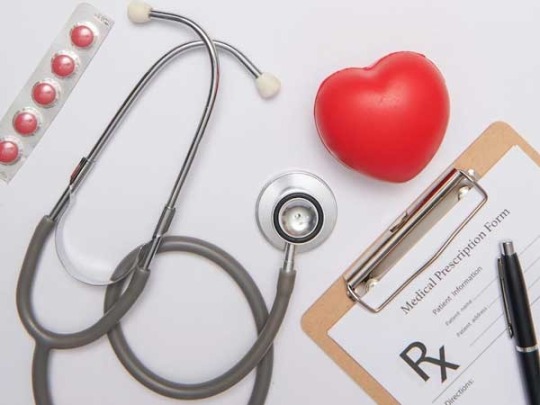
The treatment for a deviated septal is generally surgery. To correct this issue, doctors use either local anesthesia or general anesthesia. After the procedure, patients have to wear bandages over their noses for several days until the stitches dissolve. Once the stitches are removed, the patient can breathe normally again.
Deviated Nasal Septum surgery is a surgical procedure where the septum (the wall between the nostrils) is cut open and then straightened out. There are many different types of deviated septum surgeries. One type of surgery is called a closed rhinoplasty. Closed rhinoplasty involves cutting the skin and lining of the nose and removing excess bone. Then, the surgeon uses sutures to close the wound.
Another type of surgery is called an open rhinoplasty. Open rhinoplasty involves making a small incision over the bridge of the nose and using instruments to remove bone and reshape the septum. Afterward, the surgeon closes the incision with stitches.
How to Treat Deviated Nasal Septum Naturally?

First off, try not to panic! You should never attempt to manage a deviated septum, especially if you've been experiencing these symptoms for a long time. Instead, look into natural remedies to help ease the discomfort. One of the best options is to use a cold compress to relieve the pressure and irritation caused by a deviated septum. Simply apply ice to the area for 20 minutes and repeat once per day until the symptoms subside.
You could also try massaging the area with warm water mixed with aloe vera gel. After applying the mixture, cover the area with plastic wrap and leave it overnight. Next morning, rinse the area thoroughly with cool water and pat dry.
Finally, you can always consult with your doctor to discuss your options. Therefore, it's important to seek professional advice before making any major changes to your body.
What is recovery like after septoplasty?
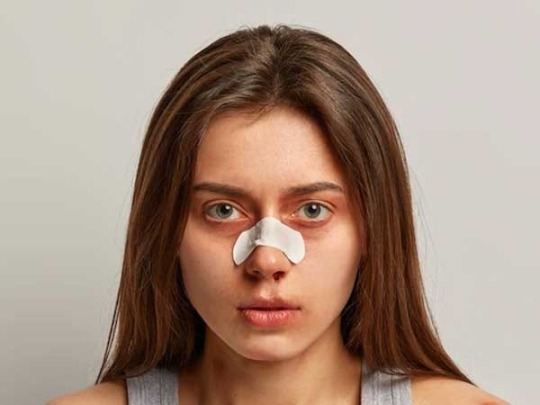
Septoplasty is a surgical procedure where the nasal septum is reshaped. A septoplasty is performed to correct a deviated septum. The recovery period following septoplasty surgery varies depending on the type of surgery performed. Most patients experience some degree of swelling and bruising at the site of the incision. Swelling may last anywhere from two days to several weeks. Patients who undergo a septoplasty with general anesthesia may feel groggy or sleepy for several hours after the procedure.
Patients who have undergone a septoplasty under local anesthesia may experience less discomfort than those who receive general anesthesia. In addition, patients who have undergone a septoplasty under local anesthesia may be able to go home earlier than those who receive general anesthesia.
After undergoing a septoplasty, patients should avoid strenuous activity until their nose heals completely. Patients should also refrain from blowing their noses excessively. If bleeding occurs, apply pressure to the area using gauze or bandages. Patients who undergo septoplasty surgery should expect to spend about three months recovering from the procedure.
Questions related to Deviated nasal septum
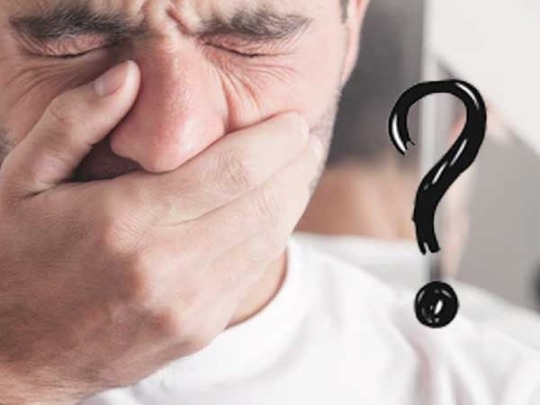
How do I know if my child has deviated nasal septa?
If you have any concerns about your children's nasal airway, you should consult with a doctor who specializes in pediatric otolaryngology (ear, nose, throat) to determine whether your child has a deviated septum. You should also consider seeing a specialist if your child has snoring, difficulty sleeping, frequent colds, or sinus infections.
How can I treat my child's deviated nasal septums?
The treatment options depend on how severe the deviation is. If your child has mild DNS, he/she might need surgery to correct the problem. However, if your child has a severe case, then you might want to use medical devices to help manage his/her symptoms. These devices include nasal strips, splints, and nasal dilators.
How can I fix my deviated nasal septum?
The first step in treating DNS is to determine how severe the issue is. You can do a physical examination and x-rays to make sure the nasal bone is correct. Adults may opt for either surgery or a functional appliance. A functional appliance is a device that helps correct the shape of the skull and reduces the size of the nasal cavity. One type of functional appliance is "Rhinoplasty Appliance".
In adults over the age of 35, doctors often suggest a series of injections that help reshape the bony structure of the nose. These are Botulinum Toxin Injections. When injected into muscles, it blocks the release of acetylcholine, a chemical neurotransmitter responsible for muscle contraction.
By blocking the action of acetylcholine at neuromuscular junctions, the toxin slows down the rate of signal transmission between nerves and muscles. As a result, the muscle relaxes and the target area grows less rigid. Since the nasal bones are small and delicate, the toxin does not affect them.
Are there any alternatives to fixing deviated nasal septa?
Yes! There are alternative treatments for patients who aren't into surgical intervention. One option is laser therapy. Laser therapy uses intense beams of concentrated visible red or infrared light to treat patients with various conditions. Another alternative is radiofrequency ablation. Radiofrequency ablation works by heating the affected tissue. Using a special tool, the doctor places a needle near the affected area.
A third option is a cryosurgery. Cryosurgery freezes tissue temporarily. After freezing, the tissue returns to normal temperature and thaws. Doctors use this procedure to destroy tumors and remove abnormal tissue.
Is there anything else I can do about my deviated nasal septum?
If you want to avoid surgeries, you can try to keep yourself healthy. Get plenty of rest, drink lots of water, and eat foods rich in Vitamin C and E. Avoid smoking cigarettes and alcohol. Also, find ways to relieve stress that may contribute to DNS. Try meditation, yoga, exercise, and relaxation techniques.
Read the full article
0 notes
Text
Ear Bleeding: How To Manage The Ear Infection?

Bleeding of the Ear can cause permanent hearing loss. Know more

Ear bleeding is a condition where blood flows out of the ear canal. There are many causes of ear bleeding including infections, trauma, allergies, and even some medications. If left untreated, ear bleeding can lead to hearing loss.
Ear bleeding can occur at any time of year, but is more likely to happen in warmer months. It's not uncommon for some people to have ear infections and develop fluid buildup around their ears. If you experience pain or discomfort when you touch your ear, then you may need to visit your doctor immediately.
Ear bleeding is commonly known as ear mites, but they're not parasites. These tiny creatures live in your ears and irritate. There are two types of ear mites: external (also called body mites) and internal (also called head mites). External ear mites live on your skin, while internal ones dwell inside your ear canal.
- External ear mites are relatively harmless. Their bites itch but don't hurt unless you scratch them or pull out their eggs. If you do get an infection, however, you may need antibiotics.
- Internal ear mites can cause serious problems if left untreated. They cause inflammation and thickening of your eardrum, which can lead to hearing loss. You can treat these mites yourself at home, though some doctors recommend seeing a doctor first.
Anatomy of Ear: External ear, middle ear, and inner ear

External Ear
The external ear consists of two parts; the pinna (the outer ear) and the tragus (the inner ear). The pinna has three layers: skin, cartilage, and bone. The cartilage layer contains many tiny holes called pores. These pores open up to the outside air and allow sound waves to pass through. The bone layer is where the auditory ossicles are located. The auditory ossicles are three small bones that move during hearing. When we hear sounds, these bones vibrate and send signals to the brain saying what the sound was.
Middle Ear
The middle ear is composed of three parts: the eardrum, the ossicles, and the chain of three smaller bones called the hammer, stirrup, and anvil. The eardrum is a thin, oval-shaped piece of connective tissue that covers both the middle and external ear. The ossicles are three tiny bones inside the middle ear cavity. The hammer and stirrup are connected by the long process of the incus while the anvil is attached to the head of the stapes. The middle ear provides a mechanical advantage that amplifies sound vibrations before they reach the inner ear.
Inner Ear
The inner ear consists of three parts: the vestibule, semicircular canals, and the cochlea. The vestibule is a hollow area behind the middle ear. It contains the endolymphatic sac, which produces the endolymph fluid that fills the membranous labyrinth. The membranous labyrinth is located at the base of the cranium and houses the three semicircular canals.
The three semicircular canals are tubes that are lined with sensory cells. They are responsible for detecting linear acceleration and rotation. The cochlea is a spiral-shaped tube that contains hair cells. Hair cells are specialized cells that detect movement. Movement causes them to bend and change their shape. This change sends electrical impulses to the brain.
The various causes of ear bleeding
There are many reasons why someone could have ear bleeds. When you're experiencing symptoms, make sure you get checked out by a medical professional. You may want to consider these possible causes:
- Infection - There are several types of ear infections, including otitis externa (commonly known as swimmer's ear), acute otitis media, chronic suppurative otitis media, and recurrent acute otitis media. These conditions can cause swelling and inflammation of the outer layer of the ear canal.
- Foreign body - A foreign object can become lodged in the ear canal. Objects that commonly cause ear problems include cotton swabs, Q-tips, jewelry, and even small pieces of wood.
- Trauma - Injuries to the ear can result in bleeding. Common causes of trauma include getting hit in the head, falling, and being bitten by animals.
- Cancer - Certain cancers can affect the ear, including skin cancer, lymphoma, leukemia, melanoma, and carcinomas.
- Tumors - Tumors can grow in the middle ear and cause pressure inside the ear.
Treatment Options

If you think you might have an ear problem, contact your doctor right away. Your doctor can perform a physical exam and listen to your ear with a stethoscope. He or she may recommend antibiotics if you have an infection. If you suspect a tumor, he or she can do a biopsy to determine whether you have cancer.
If you've had an injury to the ear, try to keep the area clean and dry. Make sure you don't push objects deeper into the ear canal. If you notice blood coming from the ear, stop using earbuds and seek medical attention.
How to Stop An Ear Infection?
There are several ways to prevent ear infections. You should regularly clean out your ears using warm water and salt. Make sure you use enough salt so the water is slightly salty. Also, avoid putting cotton buds inside your ears. If you do have an infection, consult your doctor right away. He/she may recommend an antibiotic ointment to help fight off the infection.
Prevention of Ear Bleeding:

There are several ways to prevent ear bleeding. First, make sure you have proper nutrition. You should eat a balanced diet rich in vitamins and minerals. These foods will help keep your immune system strong and ward off infections. Second, avoid using tobacco products. Tobacco contains nicotine, which is known to dry out the skin and mucous membranes. Lastly, don't overuse alcohol. Alcohol dries out the body's natural oils, causing the skin to become dry and cracked.
Home remedies: If you notice any symptoms of ear bleeding, try these home remedies.
• Cleanse your ears with warm water. If you use cotton balls, clean them first with soap and water. Then place them inside your ear canal. Let them stay inside for about 10 minutes before washing them out. Do this twice daily until the bleeding stops.
• Use ice packs. Put two ice cubes inside each ear. Leave them in for 5-10 minutes after each session. Repeat this procedure three times per day.
• Use aloe vera gel. Mix 2 tablespoons of aloe vera gel with 1 cup of lukewarm water. Pour this mixture into your ear canal. Leave it in for 15 minutes before rinsing it out thoroughly. Do this once daily.
• Apply pressure. While sitting down, put a finger in your ear canal and apply gentle pressure. Hold this position for about 30 seconds. Repeat this procedure once daily.
What happens if I have an ear infection?
Ear infections happen when bacteria grow inside of your ear causing fluid accumulation and pain. If left untreated, this can become infected and cause further problems. You should consult your doctor if you experience any symptoms of an ear infection including fever, earache, or drainage.
Are there any complications of ear bleeding?
When you bleed from your ears, you could get an ear infection from bacteria in the blood. Your doctor may prescribe antibiotics to treat the infection. But, if the infection becomes worse, they might need to remove some of your hair follicles (also called cerumen) from your outer ear canal.
How do I stop bleeding from my ears?

You can apply over-the-counter anti-inflammatory medications such as aspirin or acetaminophen to reduce inflammation and swelling around your ear. You can also use warm water to help relieve pain and pressure. Try not to blow your nose or use cotton swabs to clean out your ear. These actions could push the blood back into your ear and make things worse. Make sure to only use a clean Q-tip to clean your ears.
Is there anything else I should know about ear bleeding?
Bleeding from your ears can sometimes lead to permanent hearing loss. If you think you've been exposed to loud noise, wear headphones while working outside. Also, try to avoid using sharp objects near your ear.
The conclusion,
There's no way to tell whether you have internal ear mites until you go to the doctor. Your doctor will examine your ears, then use a microscope to look for mites. He may take samples of your earwax to check for mites.
If you find any mites, he'll give you medicine to kill them. Be sure to follow his instructions carefully. Don't use any over-the-counter remedies without talking to him first.
Read the full article
0 notes
Text
How To Dissolve Kidney Stones At Home?

What are Kidney stones? A General overview of the disease

If you are wondering how to dissolve kidney stones at home, we have got you. Kidney stones are painful and dangerous medical conditions that affect millions of people around the world. If left untreated, they can cause serious damage to your kidneys and even lead to death. However, kidney stone removal is possible with proper treatment. Here’s what you need to know about kidney stones and how to dissolve them fast.
- A kidney stone is composed of mineral deposits that build up inside the urinary tract. Kidney stones cause pain, often radiating down the back, flank, or groin. Most people who develop a kidney stone have no symptoms; however, about 10% of those affected experience severe pain. In addition, some patients may lose their appetite and become dehydrated.
The National Institute of Diabetes and Digestive and Kidney Diseases (NIDDK) estimates that approximately 1.9 million Americans suffer from kidney stones each year. These numbers represent only those people who seek medical attention. Many others never report the problem to a physician. Researchers estimate that about 5% of men and 2-10% of women will develop a kidney stone during their lifetime. Women between the ages of 20 and 50 years old are at increased risk of developing kidney stones.
While the exact causes of kidney stones remain unknown, researchers believe genetics play a role in determining whether someone develops them. Other factors affecting the likelihood of getting kidney stones include diet, exercise habits, obesity, smoking, dehydration, and certain medications. Foods high in oxalates, such as spinach, rhubarb, nuts, and soy products, increase the chances of developing a stone.
What Are Kidney Stones and how to dissolve them easily?
A kidney stone is a hard mass formed inside the kidney. Most often, these stones are made of calcium oxalate (a type of salt) and/or uric acid. Kidney stones are not uncommon among adults, especially those over 40 years old.
How Do You Know if You Have Kidney Stones?
A doctor may perform tests to determine whether you have kidney stones. These tests include blood work, urine analysis, X-rays, ultrasound scans, and CT scans. Your doctor will then recommend treatments based on his findings.
How Can You Treat Kidney Stones?
If you have kidney stones, your doctor will likely prescribe medication to help dissolve the stones. Medications commonly prescribed include painkillers, laxatives, diuretics, and antiseptics. Other medications may be recommended depending on the size and location of the stones.
How to dissolve kidney stones easily at home - Are all kidney stones the same?

The answer to this question is not what you would think! There are many different types of kidney stones, each with its own characteristics. Your doctor may recommend surgery if they are unable to dissolve naturally. However, there are some natural remedies that can help dissolve kidney stones fast.
If anyone is wondering how to dissolve kidney stones at home: Here are the top 7 ways to dissolve kidney stones fast:
- Watermelon Seeds - Watermelon seeds have been shown to reduce the size of kidney stones. You simply need to soak them overnight in water. After soaking, strain out the seeds and drink the liquid.
- Cranberry Juice - Cranberries have been known to dissolve kidney stones. Simply add 1 cup of cranberry juice to 8 ounces of water and let sit overnight. Strain out the pulp before drinking.
- Aloe Vera - Another great way to dissolve kidney stones is to use aloe vera gel. Take 2-3 tablespoons of fresh aloe vera gel and mix it with 4 cups of warm water. Let it sit overnight, then strain out the gel. Drink the mixture throughout the day.
- Lemon Juice - Lemons are rich in citric acid, which helps break down stone particles. Add lemon juice to water and let sit overnight before straining.
- Citrate of Lime - Citrate of lime is a type of mineral that dissolves kidney stones. To make the solution, take 2 teaspoons of citrate of lime per quart of water and let sit for at least 24 hours.
- Apple Cider Vinegar - Apple cider vinegar contains acetic acid, which is a strong acid that dissolves kidney stones and kills bacteria. Mix apple cider vinegar with water and let sit overnight, then strain.
- Baking Soda - Baking soda is alkaline and can neutralize the acidity of urine, making it easier to pass. Just add a pinch of baking soda to a glass of water and wait 30 minutes.
Understanding kidneys and their work in how to dissolve kidney stones?

Kidneys are responsible for filtering blood and removing toxins from the body. If they become damaged, they may begin to function improperly and cause stones to develop. These stones can lead to many symptoms including pain, fever, nausea, vomiting, loss of appetite, and fatigue. When kidney stones reach certain sizes, they can cause severe damage to the kidneys and even require surgery.
Treatment of Kidney stones

Nowadays, people who struggle with kidney stones are treated using medication or surgical removal methods. But there’s still a lot about their formation and treatment that we don’t know. If you have kidney stones, make sure you drink at least 10 cups of water each day. If you want to dissolve them faster, try adding lemon juice to your diet. Lemon contains citric acids that help break down the stones and get rid of them in your system.
You should also avoid eating foods high in oxalates and sulfur-based compounds. You should also limit the amount of salt you consume since sodium chloride can lead to stone formation.
The best way to treat kidney stones is to prevent them altogether. Limit the amount of sugar you eat and stay away from processed foods. Also, keep yourself well hydrated and avoid alcohol consumption.
Paregorics are medications approved by the Food and Drug Administration (FDA) for treating urinary tract infections (UTIs), including those caused by E.coli bacteria. Paregorics work by killing the bacteria that live inside the body's bladder and urethra. These bacteria cause UTIs. Paregorics are available over the counter (OTC).
Symptoms of Kidney stones to watch out
Common symptoms of a blocked urinary tract include back/side ache, nausea, vomiting, fever, blood in urine, and inability to urinate. A person who has passed a kidney stone will experience some degree of discomfort immediately following the event. However, this dull discomfort often lasts less than 24 hours. If you have recently experienced any of these symptoms, seek urgent medical attention.
What the doctors say
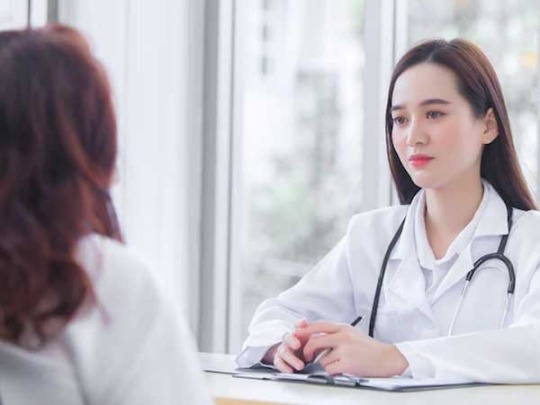
A doctor may prescribe antibiotics or a different type of medication to treat a UTI caused by E.colibacteria. Depending on the severity of the infection, the doctor may recommend an antibiotic treatment that may last several days or weeks. Antibiotics kill harmful bacteria, but they do not kill good bacteria. Taking antibiotics at the same time that you take paregorics helps ensure that both types of medicine reach their destinations in the body.
While taking paregorics, you should drink plenty of water to help flush out toxins and make room for more liquid. Your doctor will tell you whether you need to continue drinking liquids while taking the medicine. Antibiotic treatment prevents future kidney stone formation. However, if you already have a kidney stone, you will likely need surgery to remove the stone.
While undergoing surgery, you will need to stay in the hospital for a few days. Even though surgery is necessary to remove a kidney stone, it is rare for someone to develop a post-surgical complication. However, if you experience complications, you will need additional care.
How to dissolve kidney stones with ACV?
Apple Cider Vinegar (ACV) is a great natural remedy for dissolving kidney stones. ACV contains citric acid, malic acid, and tartaric acid. These three acids have been shown to help break down uric acid deposits in the body, which may prevent them from forming. In addition to its effects on uric acid levels, ACV has been shown to reduce inflammation, relieve pain, and kill bacteria.
Other Ways to Treat Kidney Stones Naturally: How to dissolve kidney stones at home?

You can use ACV to treat kidney stones naturally without having to drink it. Try adding 1 tablespoon of ACV to 4 cups of warm water and drink this solution at least twice daily. In addition, try eating foods high in vitamin C, such as oranges, strawberries, broccoli, peppers, and tomatoes. Vitamin C helps your body produce urine that is free of crystals.
- Drink lots of water
- Eat citrus fruits
- Avoid alcohol
- Reduce salt intake
- Get regular exercise
- Take supplements
- See a doctor
The Final sum up,
In order to dissolve kidney stones fast, we have to understand what causes them to begin with. There are two types of kidney stones: uric acid stones and struvite (magnesium ammonium phosphate). Your body produces these crystals naturally over time and they accumulate and become lodged in your urinary tract. However, if you suffer a major injury or trauma to your urinary tract, especially if the urine gets contaminated, then those crystals may start to form. Therefore, if you experience any sort of pain while urinating and/or blood in urine, make sure to contact your doctor immediately.
Read the full article
1 note
·
View note
Text
Cholesterol in Hindi - क्या है हाई कोलेस्ट्रॉल के कारण, लक्षण और कम करन के लिए घरेलू नूस्खे?
हाई कोलेस्ट्रॉल क्या है? (What is high cholesterol in Hindi?)
Cholesterol in Hindi - पिछले कुछ सालों से दुनियाभर में दिल की समस्याओं के मामले काफी तेजी बढ़े हैं। WHO के मुताबिक, दिल की समस्या दुनियाभर में मौत के प्रमुख कारणों में से एक हैं। लेकिन ध्यान देने वाली बात ये हैं कोलेस्ट्रॉल का लेवल बढ़ना दिल की बीमारी की मुख्य वजह मानी जाती है। कोलेस्ट्रॉल, लिवल द्वारा उत्पादिक एक वसायुक्त पदार्थ है, जो सेल मेंब्रेन्स का निर्माण करती है। कोलेस्ट्रॉल वैसे तो शरीर के लिए आवश्यक है लेकिन इसका बढ़ना गंभीर समस्याओं को जन्म देता हैं। बैड कोलेस्ट्रॉल लेवल बढ़ना दिल संबंधी गंभीर बीमारियों का (What is High Cholesterol in Hindi) कारण बनती है।
हेल्थ एक्सपर्ट्स के मुताबिक, कोलेस्ट्रॉल (Cholesterol in Hindi) के दो प्रकार होते हैं गुड़ कोलेस्ट्रॉल और बैड कोलेस्ट्रॉल। गुड़ कोलेस्ट्रॉल हमारे स्वास्थ्य को बढ़ावा देता है, लेकिन बैड कोलेस्ट्रॉल धमनियों में प्लाक ने निर्माण और रूकावट का कारण बनती है। इस स्थिति में हार्ट अटैक, स्ट्रोक या कोलेस्ट्रॉल के लेवल पर ध्यान रखकर कई समस्याओं से बचा जा सकता है। कोलेस्ट्रॉल बढ़ने के लक्षण सांस, जबड़े और बाहों पर दिखाई देते हैं।
हाई कोलेस्ट्रॉल के लक्षण (symptoms of high cholesterol in Hindi)
हाई कोलेस्ट्रॉल होने पर आपके शरीर में कुछ इस प्रकार के लक्षण नजर आने लगते हैं जैसे -
पैरों में सुन्नता (numbness of feet)
कोलेस्ट्रॉल बढ़ने पर पैर अचानक सुन्न पड़ जाते हैं, जिससे नसों में ब्लॉकेज होने के कारण पैरों तक ब्लड की सप्लाई रुक या कम हो जाती है।
मोटापा (obesity)
मोटापा अपने साथ कई बीमारियों को लेकर आता है, उनमें हाई कोलेस्ट्रॉल भी शामिल है। दरअसल, बहुत से लोग जो मोटे हैं या जिन्हें डायबिटीज है, उनमें भी हाई कोलेस्ट्रॉल (Cholesterol in Hindi) होता है।
हार्ट अटैक (heart attack)
दिल का दौरा पड़ना कोलेस्ट्रॉल बढ़ने के खतरनाक लक्षणों (High Cholesterol Symptoms) में से एक है। पहले आर्टरीज (artery) में ब्लॉकेज के कारण दबाव बढ़ने लगता है, जो आगे चलकर हार्ट अटैक का कारण बन सकता है।
हाई ब्लड प्रेशर (high blood pressure)
हाई ब्लड प्रेशर कोलेस्ट्रॉल लेवल बढ़ने की ओर इशारा करता है और इसका पता लगाना भी बेहद सरल है। बस आप समय-समय पर अपना बीपी चेक करवाते रहे।
नाखून के रंग बदलना (change nail color)
जब रक्त में कोलेस्ट्रॉल बढ़ जाए तो धमनियों में रुकावट पैदा होने लगती है। जिस वजह से नाखून का रंग पीला पड़ने लगता है।
बेचैनी (Restlessness)
कोलेस्ट्रॉल लेवल बढ़ने पर बेचैनी होने लगती है। इसके अलावा सांस लेने में दिक्कत, जी मिचलाना, थकावट और सीने में दर्द होने लगता है। इस तरह के लक्षण (High Cholesterol Symptoms) नजर आने पर आपको बिना देरी किए तुरंत डॉक्टर से संपर्क करना है।
हाई कोलेस्ट्रॉल होने के कारण (Causes high cholesterol in Hindi)
अगर आपको हाई कोलेस्ट्रॉल की समस्या है तो ऐसे कई कारण हैं जो दिल की बीमारी और स्ट्रोक की संभावना को बढ़ा सकते हैं जैसे -
खराब आहार - कुछ खाद्य पदार्थों में पहले से ही कोलेस्ट्रॉल (Cholesterol in Hindi)मौजूद होता है, लेकिन ये आहार में संतृप्त वसा की मात्रा के रूप में होता है जो अधिक जरूरी होता है।
धूम्रपान - सिगरेट में एक्रोलिन (Causes High Cholesterol in Hindi) नामक रसायन पाया जाता है और वे एलडीएल को एचडीएल द्वारा लीवर में ले जाने से रोकता है; जिससे धमनियां सिकुड़ जाती हैं।
डायबिटीज या हाई ब्लड प्रेशर
परिवार में पहले से किसी को स्ट्रोक या दिल की समस्या होना
फेमिलियल हाइपरकोलेस्टेरोलेमिया (familial hypercholesterolemia) नामक आनुवांशिक समस्या की वजह से भी ये समस्या हो सकती है। इसके कारण (Causes High Cholesterol in Hindi) उन लोगों में भी हाई कोलेस्ट्रॉल की समस्या हो सकती है जो हेल्दी भोजन का सेवन करते हैं।
हाई कोलेस्ट्रॉल को कैसे कम करें? (How to reduce high cholesterol in Hindi?)
कोलेस्ट्रॉल को बढ़ने से बेहद आसान से रोका जा सकता है, जिसके लिए आपको नीचे दी गई बातों का अवश्यक ध्यान देना जरूरी है।
जीवनशैली में बदवाल करना चाहिए।
व्यायाम करना चाहिए।
सैचुरेटेज फैट और मिठाइयों का सेवन कम करें।
एक्सरसाइज और हेल्दी डाइट सबसे अच्छा बचाव है।
डाइट में अच्छे कोलेस्ट्रॉल को बढ़ाएं।
खराब कोलेस्ट्रॉल को कम करें।
एरोबिक को शामिल करें, जैसे रनिंग, जॉगिंग, स्विमिंग, साइकिलिंग, इनसे कोलेस्ट्रॉल कम किया जा सकता है।
वाइट शुगर,वाइट नमक और आलू कम करें।
कार्बोहाइड्रेट, फैट, घी को कम करने से कोलेस्ट्रॉल कम किया जा सकता है।
इसके अलावा आपको हाई कोलेस्ट्रॉल (Cholesterol in Hindi) की समस्या रहती है तो अंडे के पीले भाग, चिकन, मक्खन, चीज़, प्रोसेस्सेड मीट, शुगर और फास्ट फूड से दूर रहें। अपनी डाइट में गुड कोलेस्ट्रॉल को शामिल करें जैसे कि, दाल, ओट्स, बींस, भिंडी, नट्स और सोयाबीन। ऐसे करने से आपका स्वास्थ्य अच्छा बना रहेगा।
हाई कोलेस्ट्रॉल को नियंत्रित करने के 10 घरेलू नूस्खे (Home remedies to control high cholesterol in Hindi)
नीचे दिए हुए घरेलू नूस्खो को अपनाकर आप अपने बढ़े हुए कोलेस्ट्रॉल को
1. एलोवेरा (Aloe vera)
आप रोजाना खाली पेट 50 ग्राम एलोवेरा खाने से कोलेस्ट्रॉल कंट्रोल (how to reduce cholesterol in Hindi) में किया जा सकता है।
2. धनिया (Coriander)
हाई कोलेस्ट्रॉल में खड़ी धनिया को ताजे पानी में रातभर भिगोकर सुबह उसका पानी पीना है। साथ ही भीगी धनिया भी चबाकर भी खाना है।
3. अंकुरित अनाज (sprouted grains)
अंकुरित दालों को दिल का दोस्त कहा जाए तो गलत नहीं होगा। अंकुरित दालों का रोजाना सेवन बुरे कोलेस्ट्रॉल (Cholesterol in Hindi) को घटाता है। अपने दिन के खाने में कम से कम आधा कप बीन्स जैसे राजमा, चने, मूंग, सोयाबीन और उड़द को आप सूप, सलाद या सब्जी किसी भी रूप में ले सकते हैं।
4. ओट्स (Oats)
रोजाना सुबह के समय नाश्ते में ओट्स खाना आपकी हेल्थ की दिन की शानदार शुरुआत होगी। 6 हफ्ते तक सुबह नाश्ते में प्रतिदिन ओट्स का दलिया लेने से एलडीएल को 5.3% तक घटा सकते हैं।
5. वाइन (Wine)
जो लोग वाइन पीने का शौक रखते हैं, वो अपना शौख बरकरार रखें। हफ्ते में 2 बार थोड़ी सी रेड ग्रेप वाइन पीना कोलेस्ट्रॉल को कम करने मे मदद करता है।
6. ग्रीन टी (green tea)
ग्रीन टी में कॉफी के मुकाबले काफी कम कैफीन पाई जाती है। साथ ही शरीर को चुस्त-दुरुस्त रखने और स्वस्थ रखने वाले एंटी-ऑक्सीडेंट भी ग्रीन-टी में ज्यादा होते हैं।रोजाना ग्रीन-टी पीने से शरीर की प्रतिरोधक क्षमता बढ़ती है जिससे बुरे कोलेस्ट्रॉल को कम (Cholesterol in Hindi) करना आसान हो जाता है।
7. मछली (fish)
जो लोग मछली खाते हैं उनके लिए भी कोलेस्ट्रॉल को घटाना आसान है। दरअसल, हमारे शरीर को स्वस्थ फैटी एसिड और अमीनो एसिड की जरूरत होती है और उच्च कोलेस्ट्रॉल के अच्छी मानी जाती है।
8. ड्राई फ्रूट्स (Dry Fruits)
रिसर्च के मुताबिक, सूखे मेवे खाना हमारी सेहत के लिए बहुत जरूरी है, क्योंकि इनमें प्रोटीन फाइबर और विटामिन-ई भरपूर मात्रा में होते हैं।साथ ही मेवों में स्वस्थ फैटी एसिड भी पाया जाता है जिसमें केमिकल्स में प्रोसेस नहीं होता है और कोलेस्ट्रॉल को कम (how to reduce cholesterol in Hindi) करने में काफी लाभदायक माना जाता है।
9. मोटापा कम करें (lose fat)
मोटापा कोलेस्ट्रॉल बढ़ने के प्रमुख कारणों में से एक है। हाई कोलेस्टेरॉल का खतरा बढ़ने पर वज़न को बढ़ने मत दीजिए। वहीं अधिक मोटापा हाई कोलेस्टेरॉल (Cholesterol in Hindi) के साथ-साथ डायबिटीज और हाई ब्लड प्रेशर का भी कारण बनता है।
10. व्यायाम करें (exercise)

आप व्यायाम के लिए वजन बढ़ने का इंतेजार (how to reduce cholesterol in Hindi) मत कीजिए। योग करने से रक्त संचार ठीक रहता है, हृदय रोगों से बचाता है और इम्यूनि सिस्टम को बढ़ाता है।
निष्कर्ष (Conclusion)
अगर आपको हमारा आर्टिकल पसंद आया है तो इस जानकारी को अधिक से अधिक लोगों तक पहुंचाए। इसे आगे जारी रखने के लिए इस TV Health पर क्लिक करें।
Read the full article
0 notes
Text
Heart Attack First Aid: Take Care Of Your Heart

First aid in heart attack: An intro to the basics of Heart attack

heart attack Symptoms
Wondering what is heart attack first aid kit? The first thing you need to know when dealing with a heart attack victim is that time is critical! Time is a muscle, not just seconds, minutes, or hours. Time is the only truly unlimited resource we have, therefore it should never be wasted, no matter how small the task may seem.
- A heart attack occurs when oxygen-rich blood flow stops temporarily in certain parts of the heart muscle (myocardium). A heart attack is a medical emergency that requires prompt attention.
The first thing you should do is get the person to lie down. You may have to do this several times until paramedics arrive. If the victim does not breathe well, check for a pulse. If the victim's skin is cold to the touch, put your hands over their chest at the bottom of the sternum bones (breastbone) and feel for a heartbeat. Do not move around much. Try to keep the person comfortable while waiting for help.
Also read: Prediabetes: Don’t Ignore the Early Warning Signs of Heart Disease
Understanding Heart Attack First Aid - What Causes a Heart Attack?
Although no single cause of a heart attack has been identified, many risk factors have been associated with them. These include smoking cigarettes, having high cholesterol levels, high blood pressure, diabetes, obesity, poor diet, lack of physical activity, and family history. Other causes of heart attacks include coronary artery disease (heart disease), congenital heart defects, atherosclerosis, rheumatic fever, pericarditis, thyroid disorders, alcohol consumption, cocaine use, caffeine intake, emotional stress, drug abuse, and genetic factors.
Also Read: Weight loss • Obesity • Fertility
Heart Attack Symptoms:
The symptoms of a heart attack vary depending on how much damage has occurred. Common symptoms include chest pain, shortness of breath, nausea, vomiting, sweating, dizziness, and fatigue.
What are the various heart attack complications? - Heart Attack First Aid Kit
Cardiac Arrest:

Cardiac Arrest
Cardiac arrest occurs when the electrical activity of the heart stops. In cardiac arrest, no electrical impulses travel through the heart. Without these signals, the heart doesn't contract properly, leading to death.
Myocardial Infarction:
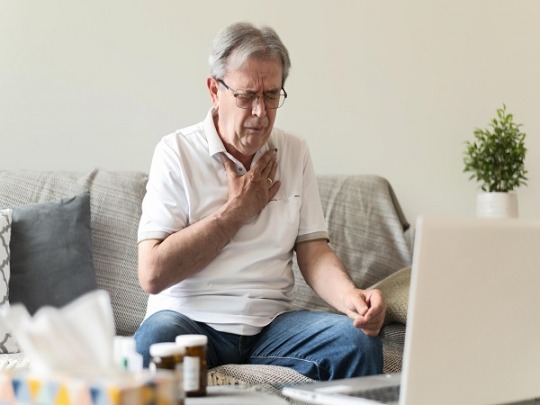
Myocardial Infarction
A myocardial infarction (MI) is the medical term for what we call a heart attack. MI results when the blood supply to part of the heart is cut off. Without blood flow to the area, the heart muscle begins to die.
Coronary Artery Disease:
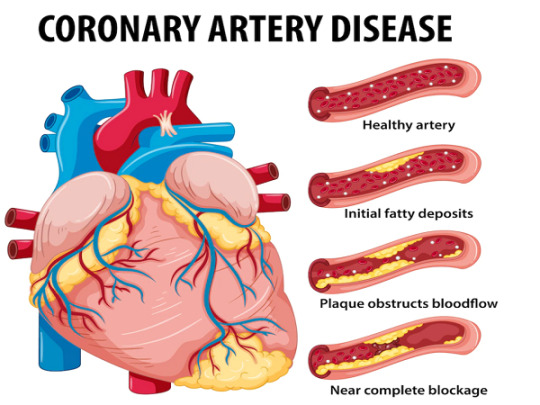
Coronary Artery Disease
Coronary artery disease (CAD) is a condition caused by the narrowing of the coronary arteries. CAD causes chest pain called angina. Angina is caused by reduced blood flow to the heart.
Stroke:
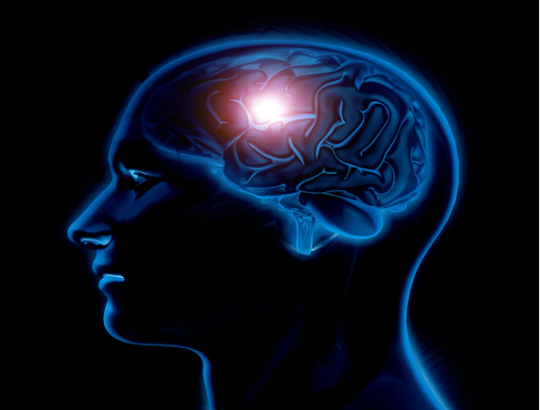
Stroke
Strokes occur when a blood clot forms in a brain artery and cuts off the blood supply to the part of the brain that controls movement and sensation. A stroke interrupts normal function of the brain and may cause weakness or paralysis on one side of the body, confusion, trouble speaking or understanding speech, vision problems, dizziness, headache, double vision, numbness or tingling in the face or arm, loss of balance or coordination, seizures, coma, or sudden death.
Peripheral Vascular Disease:

Peripheral Vascular Disease
Peripheral vascular disease (PVD) is a condition in which narrowed or blocked blood vessels in the arms, legs, kidneys, intestines, eyes, ears, nose, throat, or scalp do not provide enough blood flow to meet the demands of the body. Symptoms of PVD include leg swelling, fatigue, skin changes, ulcers, and varicose veins.
Chronic Obstructive Pulmonary Disease:
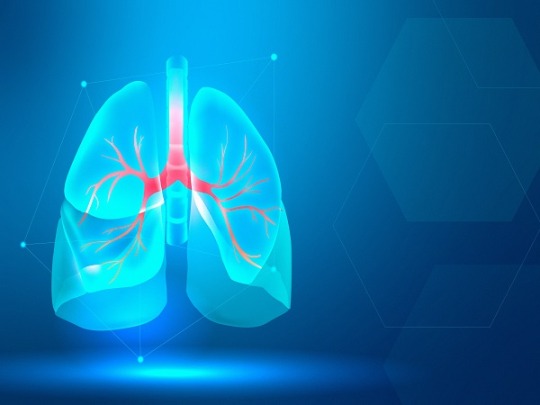
Pulmonary Disease
COPD is a lung disease characterized by long-term breathing problems that make it hard to breathe. People who have COPD often cough much, especially at night; they may wheeze or even experience shortness of breath.
What to do when someone is having a heart attack? Basics of Heart Attack First Aid.
- Call Ambulance: If you or someone you know experiences chest pain or discomfort, call the doctor immediately. If possible, get them to lay down and position themselves comfortably. Do not try to move them until emergency responders arrive. If they feel faint, have them lean their head back and place a hand lightly over their forehead.
- Stay calm!: Try not to panic. Keep breathing deeply and slowly. Try to relax your muscles and maintain a relaxed posture. Don’t worry about what happened before.
- Don’t give CPR: Don’t attempt to perform CPR. Emergency responders will assess the situation and decide whether CPR should occur.
- Have the person lie still: Lie them down flat on their back. Let them rest. Keep them comfortable at all times.
- Monitor vitals: Monitor their blood pressure, pulse rate, temperature, and respiration. If any of these numbers begin to rise or fall, call 911 again.
- EKG: An electrocardiogram (EKG) will help determine if the person is experiencing a heart attack. An EKG measures electrical activity in the heart and looks for abnormalities. It is performed by placing small electrodes on the skin and attaching wires to measure heart rhythm.
- Get medical attention: Get the person to the nearest hospital or urgent care center. Give them oxygen if necessary. Tell them to notify EMS (Emergency Medical Services) that they are going to the ER (emergency room).
Also read: The Ultimate Guideline to Rheumatic Heart Disease
Heart Attack First Aid: Prevention of heart attack
Proper Diet and Nutrition:

Proper Diet and Nutrition
A proper diet should consist of foods rich in omega-3 fatty acids (fish), antioxidants (berries), fiber (whole grains), and monounsaturated fats (avocado). These types of food help prevent heart attacks and stroke. A balanced diet with a variety of fruits, vegetables, whole grains, lean meats, and low-fat dairy products will supply your body with the necessary vitamins and nutrients. Also, make sure to drink plenty of water daily, at least 8 glasses per day. Drinking enough water helps keep blood pressure down.
Exercise Regularly:

Exercise Regularly
Regular exercise helps lower cholesterol levels and blood pressure. Exercise also helps strengthen the muscles. It's especially helpful if done regularly after meals.
Quit Smoking Cigarettes:

Quit Smoking Cigarettes
Smoking cigarettes causes plaque buildup inside arteries, which narrows them and makes it harder for blood to pass through. If you're a smoker, stop immediately. Ask your doctor about quitting smoking programs.
Maintain Optimal Blood Pressure Levels:

Maintain Optimal Blood Pressure Levels
The American Heart Association recommends maintaining optimal blood pressure levels. High blood pressure can cause clogged arteries and increase the risk of having a heart attack or stroke. To reduce your chances of developing high blood pressure, maintain a healthy weight; eat a well-balanced diet; limit alcohol consumption; avoid salt substitutes and caffeine; get regular physical activity, and manage stress effectively.
Avoid Alcohol Consumption:

Avoid Alcohol Consumption
Heavy drinking can raise blood pressure, lead to dehydration, and result in poor nutrition due to overeating. Moderate drinking may have some positive effects on cardiovascular health, but heavy alcohol use can damage the liver, pancreas, and kidneys. Limit yourself to no more than two drinks a day for women and three for men.
Lower Cholesterol Levels:

Lower Cholesterol Levels
The American Heart Association recommends eating a low-fat, low-cholesterol, high-fiber diet to control cholesterol levels. Foods that are high in saturated fats, trans fats, and cholesterol, such as red meat, full-fat cheese, butter, fried foods, and commercially baked goods, should be avoided. Instead opt for lean cuts of meat, low-fat cheeses, plain yogurt, beans, nuts, and fish.
Get Enough Sleep:

Get Enough Sleep
Sleep deprivation can cause increased blood pressure and affect your immune system. Getting adequate sleep is the number one way to keep your heart healthy. Make sure you get seven hours of uninterrupted sleep each night.
The conclusion,
If someone is having a heart attack, they need to get to the hospital right away. If they don't go to the hospital, they could die. You cannot help someone who is having a heart attack unless you have been trained to do so. Make sure the victim gets oxygen while waiting for emergency services to arrive. The first thing to do is stay calm and quiet. If there’s any panic, it will be worse than the situation. Try not to act too much, just remain calm. You may want to have someone else take over in case things get out of control.
Read the full article
0 notes
Text
Fatty Liver - Diet, Symptoms And Causes

Don't Let Fatty Liver Control Your Life! Learn the Causes, Symptoms, and Treatment Now
Fatty liver disease (FLD) is a condition where the liver accumulates excess fat.
#FattyLiver #FattyLiversymptoms
Read the full article
0 notes
Text
Diet and Nutrition: The Perfect Body Guide

Get on the Right Track with Diet and Nutrition!
Diet and Nutrition are two terms that are often confused. Diet refers to what we eat while nutrition refers to how our body uses food.
#DietandNutrition
Read the full article
0 notes